Giochi dell'Oca e di percorso
(by Luigi Ciompi & Adrian Seville)
(by Luigi Ciompi & Adrian Seville)

|
Giochi dell'Oca e di percorso
(by Luigi Ciompi & Adrian Seville) |

|
Presenti 66 articoli
|
ANNO |
TITOLO |
LINK |
| IV° a. C. (370) | Socrate, "Il rifiuto della scrittura" e "Il mito di Theuth (Platone, "Fedro" 370 a. C. circa) Il dialogo platonico Fedro è dedicato all’amore, all’indagine sulla natura dell’anima umana e a una analisi accurata della retorica e della dialettica. Verso la fine del dialogo, per affrontare il problema del valore del discorso scritto, Platone, come in altre occasioni, utilizza un mito. Attraverso il mito di Theuth, Socrate mostra che conoscenza e sapienza non sono la stessa cosa. Chi aumenta le proprie conoscenze leggendo gli scritti degli altri, facilmente può pensare di aumentare cosí anche la propria sapienza. Ma si tratta di una presunzione infondata e pericolosa. Platone, Fedro, 274 c-276 a [274 c] [...] Socrate – Ho sentito narrare che a Naucrati d’Egitto dimorava uno dei vecchi dèi del paese, il dio a cui è sacro l’uccello chiamato ibis e di nome detto Theuth. Egli fu l’inventore dei numeri, [d] del calcolo, della geometria e dell’astronomia, per non parlare del gioco del tavoliere e dei dadi e finalmente delle lettere dell’alfabeto. Re dell’intiero paese era a quel tempo Thamus, che abitava nella grande città dell’Alto Egitto che i Greci chiamano Tebe egiziana e il cui dio è Ammone. Theuth venne presso il re, gli rivelò le sue arti dicendo che esse dovevano esser diffuse presso tutti gli Egiziani. Il re di ciascuna gli chiedeva quale utilità comportasse, e poiché Theuth spiegava, egli disapprovava ciò che gli sembrava [e] negativo, lodava ciò che gli pareva dicesse bene. Su ciascuna arte, dice la storia, Thamus aveva molti argomenti da dire a Theuth sia contro che a favore, ma sarebbe troppo lungo esporli [...]. ((Fedro)) |  |
| III°/II° a. C. | MEHEN "A game board in the form of a coiled snake was among the earliest Egyptian games. Using a set of lion-shaped and round markers, play started at the snake's tail, which was in the form of a bird's head. The two or four opponents raced each other to the goal located in the snake's head. Mehen was the name of the serpent deity whose coils protected the sun god." Bibliography | 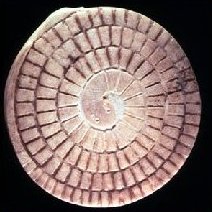 |
| II° a. C. | PHAISTOS DISC One of the most famous mysteries in Archeology. It’s the Phaistos Disc. It is a disk of fired clay from the Minoan palace of Phaistos on the Greek island of Crete, possibly dating to the middle or late Minoan Bronze Age. So it’s about four thousand years old. Bibliography | 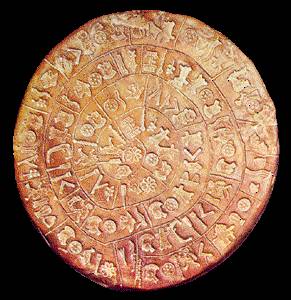 |
| I° d. C. | Tabula Cebetis La Tabula Cebetis è un'ekphrasis greca tradizionalmente attribuita a Cebete di Tebe e datata al IV secolo a.C., che oggi si tende a postdatare al I secolo d.C. Si tratta di un testo allegorico che propone la descrizione della raffigurazione di un percorso volto alla scelta tra bene e male. La circolazione dell'opera sarebbe cominciata nella seconda metà del secolo XV presso la corte di Firenze dove ne viene stampata la prima edizione. Per i suoi significati moraleggianti riconducibili a istanze diverse, cristiane, archeologiche e filosofiche, il testo ottiene immediatamente grande successo in tutta Europa tanto da diventare la fonte iconografica di alcune importanti imprese decorative di committenza pontificia. Le prime rappresentazioni cinquecentesche allegate a questo testo suggeriscono una certa analogia con le tavole del Gioco dell'Oca, per il loro andamento spiraliforme, la presenza della figura femminile della Fortuna e l'idea sottesa in entrambi di un percorso ricco di ostacoli e finalizzato al raggiungimento di una meta. (Patrizia Giamminuti) Bibliography 1) GIAMMINUTI, Patrizia: "Il Gioco dell’Oca: una proposta iconografica." In "Ludica. Annali di storia e civiltà del gioco", 23, 2017 (Giamminuti). | 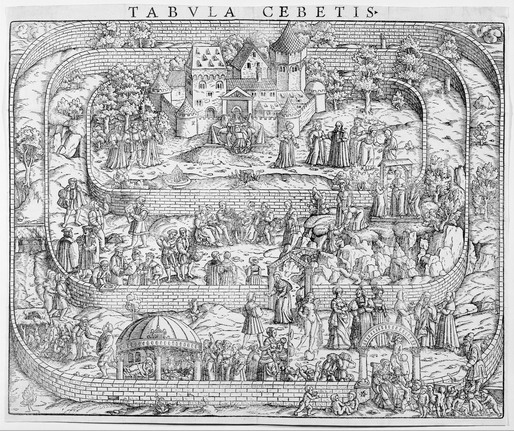 |
| II°/III° d. C. | Ermete Trismegistro
è un personaggio leggendario di età pre-classica, venerato come maestro di sapienza e ritenuto l'autore del Corpus hermeticum. A lui è attribuita la fondazione di quella corrente filosofica nota come ermetismo.
Ermete Trismegisto significa letteralmente "Ermete il tre volte grandissimo". Con questo nome si voleva assimilare Ermete/Hermes, dio greco del logos e della comunicazione, a Thot, dio egizio delle lettere, dei numeri e della geometria. Essendo costume degli egizi iterare l'aggettivo "grande" davanti al nome delle divinità, Ermete era quindi appunto indicato come il "grandissimo" per tre volte (tris-megisto).
Nel 1453 durante un viaggio in Macedonia, via Costantinopoli, il monaco italiano Leonardo da Pistoia scoprì quattordici libri originali, appartenuti a Michele Psello, di un’opera risalente all'XI secolo, scritta in greco per Ermete Trismegisto e intitolata "Hermetica" (in seguito detta Corpus hermeticum). Ritornato a Firenze, il monaco Leonardo consegnò il Corpus hermeticum a Cosimo de' Medici che non più tardi del 1463 incaricò Marsilio Ficino di tradurlo dal greco al latino e in seguito all'italiano dell’epoca.
Il Corpus hermeticum rappresentò la fonte d’ispirazione del pensiero ermetico e neoplatonico rinascimentale.
Bibliography | 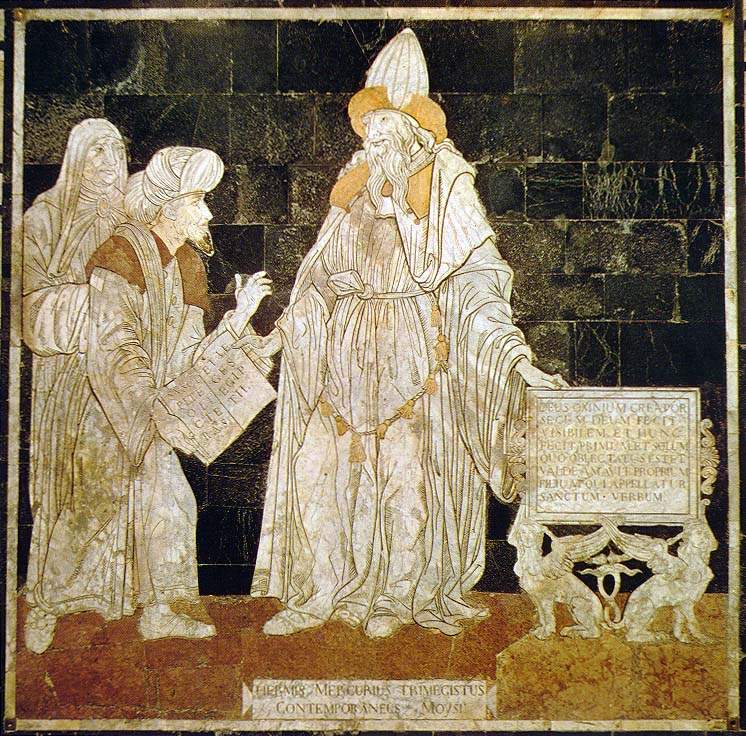 |
| 1050 | "Corpus Hermeticum" Il Corpus Hermeticum è una collezione di scritti dell'antichità che rappresentò la fonte di ispirazione del pensiero ermetico e neoplatonico rinascimentale. All'epoca il Corpus era attribuito all'antichità egizia ed era ritenuto addirittura precedente a Mosè, come opera di Ermete Trismegisto ("tre volte grandissimo Ermes"), la cui rivelazione religiosa si riteneva vi fosse in qualche modo contenuta. Marsilio Ficino indicava Orfeo, Pitagora e Platone come i più tardi rappresentanti della sapienza antica contenuta nel Corpus. Il testo come lo conosciamo oggi, si pensa che risalga al 1050 circa, periodo in cui fu raccolto e collezionato da Michele Psello, eminente studioso bizantino, insegnante di filosofia, storico, teologo e funzionario statale. Psello rimosse probabilmente elementi strettamente magici e alchemici, rendendo il Corpus più accettabile per la Chiesa ortodossa. L'esistenza del testo venne probabilmente resa nota in occidente, insieme a quella di altri testi antichi ancora sconosciuti o andati perduti come il Timeo di Platone, in occasione del concilio che avrebbe dovuto sanare lo scisma d'Oriente, tenutosi nella Firenze di Cosimo de' Medici nel 1438. L'imperatore Giovanni VIII Paleologo e il patriarca di Costantinopoli Gennadio II arrivarono infatti in Italia con un seguito di 650 fra studiosi, eruditi ed ecclesiastici. Nel 1460, Cosimo riuscì ad avere la copia originale appartenuta a Michele Psello, risalente all'XI secolo, attraverso il monaco italiano Leonardo da Pistoia che l'aveva scoperta poco tempo prima in Macedonia. Cosimo ordinò a Marsilio Ficino di interrompere subito la traduzione di un libro di Platone per concentrarsi sul Corpus. Ficino completò il suo lavoro nell'aprile del 1463 e ebbe come compenso una villa a Careggi. Il corpus è diviso in due parti: A)"Pimander" - tradotto solo nel 1463 da Marsilio Ficino consta di quattordici libri e tratta della creazione. B)"Asclepius" - già circolante in epoca medievale nella versione attribuita a Apuleio di Madaura, è un trattato di magia talismanica nel quale si espongono le pratiche dei sacerdoti egizi volte all'animazione di statue, tramite l'interazione con forze sovrannaturali. Successivamente Isaac Casaubon (1559-1614), nel "De rebus sacris et ecclesiasticis" (1614) argomentò la posteriorità della redazione rispetto a quanto allora ritenuto, datandola in epoca tardo ellenistica e mettendo in dubbio la reale esistenza storica del suo autore. La datazione di Casaubon è stata generalmente accettata nei secoli successivi. Rimane tuttavia discusso il problema se i contenuti del Corpus hermeticum siano coevi alla sua redazione, o risalgano a tempi anteriori e di quanto, nel quadro del dibattito sull'importanza dell'influsso egiziano sulla Grecia. Martin Bernal, nel suo libro Atena nera, ha contestato i risultati di Casaubon, riaffermando l'origine egiziana del Corpus hermeticum. (Wikipedia) Bibliography | 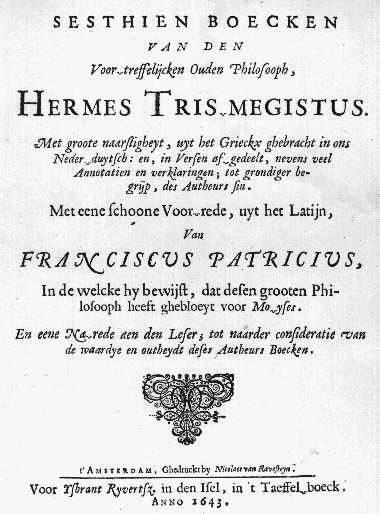 |
| 1433/99 | Marsilio Ficino (Figline Valdarno, 19 ottobre 1433 – Careggi, 1º ottobre 1499). Filosofo, umanista e astrologo, figlio del medico personale di Cosimo il Vecchio, Diotifeci d'Agnolo, e di Alessandra di Nanoccio, studia a Firenze sotto Luca de Bernardi e Comando Comandi e apprende le prime nozioni di greco da Francesco da Castiglione. Intorno al 1460 traduce Alcinoo, Speusippo, i versi attribuiti a Pitagora e l'Assioco attribuito a Senocrate. Tradotti gli inni di Orfeo, di Omero, di Proclo e la Teogonìa di Esiodo, riceve in dono da Cosimo de' Medici un codice platonico e una villa a Careggi, che diverrà nel 1462 sede della nuova Accademia Platonica, fondata dallo stesso Ficino per volere di Cosimo, con il compito di studiare le opere di Platone e dei platonici, al fine di promuoverne la diffusione. Qui inizia la traduzione, nell'aprile del 1463, dei Libri ermetici (Corpus hermeticum), portati in Italia dalla Macedonia da Leonardo da Pistoia; la sua opera di traduzione avrà un notevole influsso nel pensiero rinascimentale europeo. La sua traduzione latina del Corpus hermeticum, già tradotta in volgare nel 1463 da Tommaso Benci, viene stampata nel 1471. (Wikipedia) Bibliography | 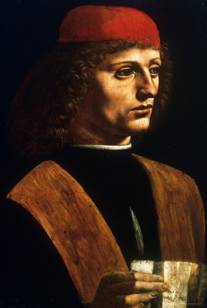 |
| 1434/64 | L'Umanesimo Mediceo (1434-1464) Cosimo dei Medici (1389-1464) La politica culturale di Cosimo fu improntata, come già ricordato prima, alla promozione dell'immagine della sua casata e di Firenze stessa. Aiutato da intellettuali di primo calibro come il vecchio Niccolò Niccoli, il già citato Marsuppini (che succedette al Bruni come Cancelliere della Repubblica) e da Vespasiano da Bisticci, Cosimo promosse la costituzione della biblioteca di famiglia e l'ulteriore incontro tra civiltà latina e quella greca in occasione del Concilio del 1439. L'incontro con i due dotti neoplatonici greci Pletone e Bessarione diede a Cosimo l'idea di creare un fulcro per la diffusione delle teorie di Platone. L'intellettuale di maggior spicco della sua "corte" che lo aiutò in questo progetto fu Marsilio Ficino, figlio del primo medico di famiglia dei Medici al quale Cosimo rimase legato da profondi vincoli d'amicizia, con il quale rifondò per l'appunto l'Accademia neoplatonica, luogo ideale per il ritrovo degli umanisti, che potevano scambiarsi le varie teorie filosofiche. A favorire la diffusione della filosofia platonica fu però anche la scoperta del "Corpus hermeticum" ad opera del suo privato scrittore, il monaco Leonardo Alberti de Candia. Conosciuto con lo pseudonimo di "Leonardo da Pistoia" fu incaricato da Cosimo di reperire per suo conto antichi manoscritti in lingua greca e latina nei territori appartenuti agli antichi stati Bizantini. Nel 1453 durante un viaggio in Macedonia, il monaco scoprì i quattordici libri del testo greco di Ermete Trismegisto. Si trattava della copia originale appartenuta a Michele Psello, risalente all'XI secolo. Ritornato a Firenze, Leonardo da Pistoia consegnò il testo a Cosimo de' Medici che non più tardi del 1463 incaricò Marsilio Ficino di tradurre dal greco al latino. Il Corpus hermeticum, composto da scritti dell'antichità, rappresentò la fonte di ispirazione del pensiero ermetico e neoplatonico rinascimentale. Bibliography | 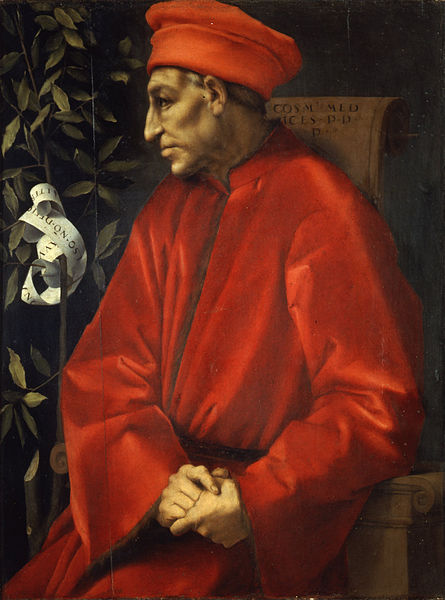 |
| 1450-1500 | Tabula Cebetis La Tabula Cebetis è un'ekphrasis greca tradizionalmente attribuita a Cebete di Tebe e datata al IV secolo a.C., che oggi si tende a postdatare al I secolo d.C. Si tratta di un testo allegorico che propone la descrizione della raffigurazione di un percorso volto alla scelta tra bene e male. La circolazione dell'opera sarebbe cominciata nella seconda metà del secolo XV presso la corte di Firenze dove ne viene stampata la prima edizione. Per i suoi significati moraleggianti riconducibili a istanze diverse, cristiane, archeologiche e filosofiche, il testo ottiene immediatamente grande successo in tutta Europa tanto da diventare la fonte iconografica di alcune importanti imprese decorative di committenza pontificia. Le prime rappresentazioni cinquecentesche allegate a questo testo suggeriscono una certa analogia con le tavole del Gioco dell'Oca, per il loro andamento spiraliforme, la presenza della figura femminile della Fortuna e l'idea sottesa in entrambi di un percorso ricco di ostacoli e finalizzato al raggiungimento di una meta. (Patrizia Giamminuti) Bibliography 1) GIAMMINUTI, Patrizia: "Il Gioco dell’Oca: una proposta iconografica." In "Ludica. Annali di storia e civiltà del gioco", 23, 2017 (Giamminuti). | 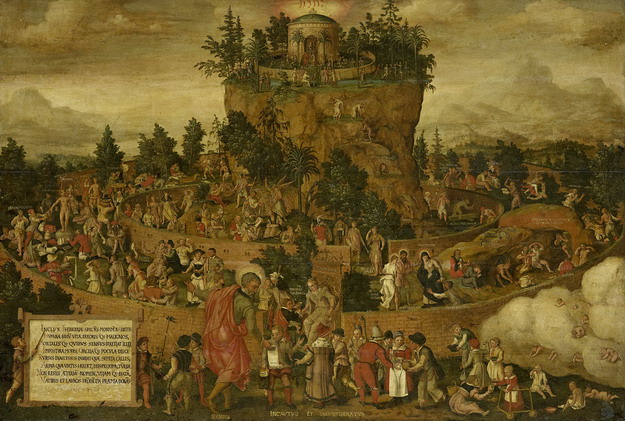 |
| 1453 | Leonardo Alberti de Candia. Conosciuto con lo pseudonimo di "Leonardo da Pistoia" (detto anche Leonardo il Macedone), Leonardo fu monaco e scrittore della corte dei Medici nel XV secolo e qui fu incaricato da Cosimo de' Medici di reperire per suo conto antichi manoscritti in lingua greca e latina nei territori appartenuti agli antichi stati Bizantini. Durante un viaggio in Macedonia e nella regione di Costantinopoli nel 1453/9, scoprì quattordici libri del Corpus Hermeticum, un testo greco attribuito a Ermete Trismegisto. Il manoscritto scoperto da Leonardo era la copia originale appartenuta a Michele Psello, risalente all'XI secolo. Ritornato a Firenze, il monaco consegnò il Corpus Hermeticum a Cosimo de' Medici, che non più tardi del 1463 incaricò Marsilio Ficino di tradurre dal greco al latino. Il Corpus Hermeticum rappresentò la fonte di ispirazione del pensiero ermetico e neoplatonico rinascimentale e dell'ermetismo filosofico. Oggi è conservato alla Biblioteca Medicea Laurenziana di Firenze. (Wikipedia) Bibliography |  |
| 1462 | ACCADEMIA NEOPLATONICA (1462-1523). L'Accademia neoplatonica fu un'istituzione culturale fondata a Firenze nel 1462 da Marsilio Ficino, per incarico di Cosimo de' Medici, nella Villa medicea di Careggi. Il contesto culturale in cui l'Accademia si trovò ad operare era allora fortemente segnato dal platonismo, rinato in Italia verso la fine del XV secolo, attraverso l'umanesimo. Fu in particolare l'istituzione di cattedre di greco nelle principali università, dovuta a diversi episodi come la provvisoria riunificazione tra le Chiese d'Oriente e d'Occidente del 1438, o la diaspora di intellettuali bizantini dopo la presa di Costantinopoli (1453) arruolati come insegnanti in Italia, che permise l'uso diretto dei testi di Platone, pressoché sconosciuti nel Medioevo, che diede avvio alle traduzioni in latino. A Firenze l'Accademia, che doveva significare simbolicamente la riapertura dell'antica Accademia di Atene, costituì un importante cenacolo di artisti, filologhi e intellettuali. Qui Marsilio Ficino tradusse in latino l'opera di Platone, ma anche di Plotino e di altri esponenti del neoplatonismo: fu proprio quest'ultima chiave interpretativa del platonismo a prevalere. Platone cioè era considerato idealmente il capostipite di concezioni filosofiche appartenute anche ad autori successivi e cristiani, come Agostino o Boezio.Fra gli esponenti principali dell'Accademia Neoplatonica ci furono, oltre allo stesso Ficino, Pico della Mirandola, Poliziano, Nicola Cusano, Leon Battista Alberti, Bartolomeo Scala e Cristoforo Landino, nonché esponenti della famiglia dei Medici, quali Giuliano de' Medici e Lorenzo il Magnifico. Essi si riunivano alla villa di Careggi, nei dintorni di Firenze e dopo la morte del Magnifico (1492) l'Accademia si riunì alla villa di Bernardo Rucellai, presso gli Orti Oricellai. Fecero parte di questa "seconda generazione" Niccolò Machiavelli, il Trissino, Jacopo da Diacceto, Luigi Alamanni e tanti altri. Tra l'altro in questo periodo l'Accademia si distinse per le posizioni favorevoli alla Repubblica e quindi antimedicee, che valsero agli accademici non pochi problemi. L'Accademia Neoplatonica fu infatti sciolta nel 1523, in conseguenza della congiura ordita contro il cardinale Giulio de' Medici da parte di alcuni suoi membri. (Wikipedia) Bibliography |  |
| 1463 | Marsilio Ficino riceve in dono da Cosimo de' Medici un codice platonico e una villa a Careggi, che diverrà nel 1462 sede della nuova Accademia Platonica, fondata dallo stesso Ficino per volere di Cosimo, con il compito di studiare le opere di Platone e dei platonici, al fine di promuoverne la diffusione. Qui inizia la traduzione, nell'aprile del 1463, dei Libri ermetici (Corpus Hermeticum), portati in Italia dalla Macedonia da Leonardo da Pistoia; la sua opera di traduzione avrà un notevole influsso nel pensiero rinascimentale europeo. La sua traduzione latina del "Corpus Hermeticum", già tradotta in volgare nel 1463 da Tommaso Benci, viene stampata nel 1471. Bibliography | 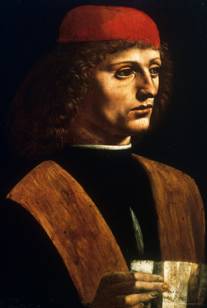 |
| 1463 | Nel 1463 viene vietata da parte di Borso d’Este la pratica del Gioco dell'Oca ad Argenta, in Emilia Romagna. Il divieto è contenuto in una pubblicazione del 1781, "Statuta Terrae Argentae". Bibliography 1) GIAMMINUTI, Patrizia: "Il Gioco dell’Oca: una proposta iconografica." In "Ludica. Annali di storia e civiltà del gioco", 23, 2017 (Giamminuti). | 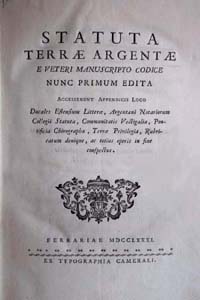 |
| 1463/94 | Giovanni Pico dei Conti della Mirandola e della Concordia, conosciuto semplicemente come Pico della Mirandola, anche se desiderava farsi chiamare Conte della Concordia (Mirandola, 24 febbraio 1463 – Firenze, 17 novembre 1494). "During the italian Renaissance, Giovanni Pico della Mirandola (1643-1494) published "Conclusiones Philosophicae Cabalisticae Theologicae", in which he attempted to prove that kabbalah was the key to Christian mysteries. He also translated many works on kabbalah into latin, claiming "no science can better convince us of the divinity of Jesus Christ than magic and the kabbalah". Because of this he was declared a heretic by the Church and condemned for using "magic". Johannes Reuchlin (1455-1522) produced the first systematic work of Christian Kabbalah. Known as "De Arte Cabalistica" (The Bible of the Christian Cabala). He believed as did Pico della Mirandola, that Kabbalah was the key to Christian Mysteries. "...Cabalistic significance and numerological scheme. The numbers in this complex game are not arbitrary. The number 63 is highly significant in Cabalistic systems of thought. The Cabala, a system of Jewish mystical theology developed in Spain in the 12th - 13th centuries, though based on an earlier manuscript, was adapted for Christian use in the Renaissance. Italian scholars such as Pico della Mirandola [d. 1494] were especially significant in this adaptation, though it was a pan-European phenomenon. [Blau 1944]. The Cabala drew on complex symbolism to assign numerical values to words and hence to associate particular significance to the numbers themselves. The number 63, the product of 7 and 9, represents the Great (or Grand) Climacteric [Browne 1650]: "And so perhaps hath it happened unto the number 7. and 9. which multiplyed into themselves doe make up 63. commonly esteemed the great Climactericall of our lives." (Adrian Seville) Bibliography 1) SEVILLE, Adrian: "Tradition and Variation in the Game of Goose". In: "Board Games in Academia III", Firenze, Aprile 1999 (aggiornamento del 2005). (Seville). 2) SEVILLE, Adrian: "Les mysteres du Jeu de l'Oie au Metropolitan Museum de New York". Journée d’étude Mardi 12 février 2013 à l’occasion de l’exposition "Art du jeu, jeu dans l’art. De Babylone à l’Occident médiéval", présentée au Musée de Cluny. 2013. (Seville) 3) SEVILLE, Adrian: "The Royal Game of the Goose four hundred years of printed Board Games". Catalogue of an Exhibition at the Grolier Club, February 23 - May 14, 2016. 4) ENGAMMARE, Max: Soixante-trois. La peur de la grande année climactérique à la Renaissance. DROZ, Rue Firmin-Massot 11, 1206 Genève, Svizzera, 2013. ((Engammare). |  |
| 1477/80 | Ad oggi, sono due i documenti rintracciati dagli storici in cui il gioco dell'oca viene proibito e inserito tra i giochi d'azzardo. Si tratta di un divieto di Borso d'Este del 1463 che conosciamo in una pubblicazione del 1781, "Statuta Terrae Argentae", e di un registro di processi contro giocatori compilato sempre in ambito ferrarese tra il 1477 e il 1480. Se la parola "ocha" qui contenuta fa davvero riferimento al nostro gioco, resta ancora difficile da spiegare perché il passatempo scompaia nei successivi bandi e anche nei repertori di giochi cinquecenteschi.
(Patrizia Giamminuti) Bibliography 1) GIAMMINUTI, Patrizia: "Il Gioco dell’Oca: una proposta iconografica." In "Ludica. Annali di storia e civiltà del gioco", 23, 2017 (Giamminuti). | 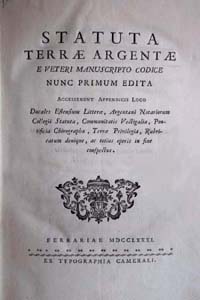 |
| 1480 (1497/98) | Gabriele da Barletta (Aquino (?) - Barletta (?), prima metà del XV secolo – dopo il 1480) "... The earliest reference to the Game of the Goose appears in an obscure book of sermons for Advent by the Dominican Gabriele da Barletta in 1480. He speaks (disapprovingly) of playing games at Christmas and, moreover, of the need for large and small dice, to overcome the imperfections of vision due to old age. "Si vult venire, in domum meam in istis festis paravi plura. Si voluerit ludere ad triumphos, sunt in domo; si a tavole habeo plura tabularia; si a locha habeo taxillos grossos et minutos." [If anyone comes to my house in this season, I have prepared several games. If he wishes to play at tarot, there are tarot cards in the house; if at backgammon [tavole], I have several boards; for goose I have both large and small dice (T. Depaulis).] This text is paraphrased by Rabelais in the Third Book of Pantagruel, published in 1546, which satirically relates the use of dice by Judge Bridoye (literally “Bridlegoose” but meaning, colloquially, “nincompoop”) in reaching legal decisions: for difficult cases the judge uses dice too small to see the numbers! In fact much of the Third Book can be interpreted as an ironic Goose game. (Adrian Seville) Bibliography 1) SEVILLE, Adrian: "Les mysteres du Jeu de l'Oie au Metropolitan Museum de New York". Journée d’étude Mardi 12 février 2013 à l’occasion de l’exposition "Art du jeu, jeu dans l’art. De Babylone à l’Occident médiéval", présentée au Musée de Cluny. 2013. (Seville) 2) SEVILLE, Adrian: "The Royal Game of the Goose four hundred years of printed Board Games". Catalogue of an Exhibition at the Grolier Club, February 23 - May 14, 2016. 3) CIOMPI, Luigi: "Gabriele da Barletta", in www.giochidelloca.it, 2016. 4) GIAMMINUTI, Patrizia: "Il Gioco dell’Oca: una proposta iconografica." In "Ludica. Annali di storia e civiltà del gioco", 23, 2017 (Giamminuti). | 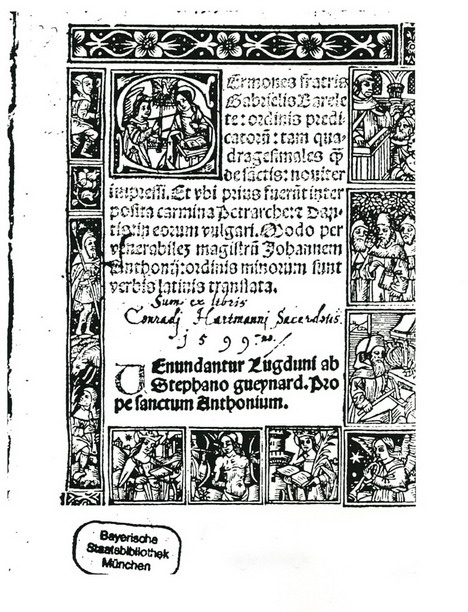 |
| 1480 | Gabriele da Barletta (Aquino (?) - Barletta (?), prima metà del XV secolo - dopo il 1480). Nel "Sermone" della Quarta Domenica dell’Avvento, viene citato fra vari giochi anche il Gioco dell’Oca. Viene infatti descritto un empio che invece di ospitare Dio nel suo cuore in occasione della messa domenicale, pensò bene di proporsi ad ospitarlo a casa sua allo scopo di divertirsi giocando insieme a carte: “Se vuole venire nella mia casa in queste feste ho preparato parecchie cose. Se volesse giocare ai Trionfi essi sono in casa; [se volesse giocare] alle tessere, ho molte tavole. Per il gioco dell’Occam ho dadi grossi, e piccoli: grossi se vedesse estremamente male”. Giacché Dio venne meno: che impertinenza! O meglio quale empietà. | 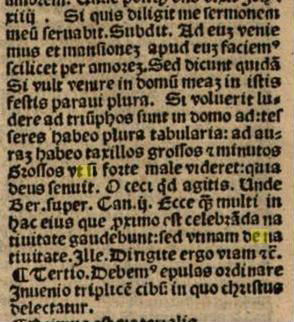 |
| 1486 | "Conclusiones Philosophicae, Cabalisticae et Theologicae" (1486) "Le Conclusiones nongentae di Giovanni Pico della Mirandola, conosciute anche come "Conclusiones philosophicae, cabalisticae et theologicae", furono pubblicate a Roma nel 1486. Nel suo primo libro a stampa Pico propose una summa del sapere filosofico esposto in novecento conclusioni, ossia tesi in forma di aforisma, che affiancavano alla tradizione aristotelica e platonica anche elementi magici e cabalistici. Gli inconsueti accostamenti tra filosofia tradizionale, cabala e magia offerti da Pico della Mirandola costarono al libro la condanna papale, ma contribuirono a fondare la fama dell'autore come padrone di un sapere privilegiato." Bibliography 1) BIONDI, Albano: "Conclusiones nongentae. Le novecento tesi dell'anno 1486." Studi Pichiani, vol. 1, 1995. Ristampa 2013. Casa Editrice Leo S. Olschki, Firenze. 2) LELLI, Fabrizio: "Giovanni Pico e la cabbalà." Studi pichiani, vol. 16, 2014. Casa Editrice Leo S. Olschki, Firenze. 3) BACCHELLI, Franco: "Giovanni Pico e Pierleone da Spoleto. Tra filosofia dell’amore e tradizione cabalistica". Istituto nazionale di studi sul Rinascimento - Quaderni di "Rinascimento", vol. 39, 2001, Casa Editrice Leo S. Olschki, Firenze. | 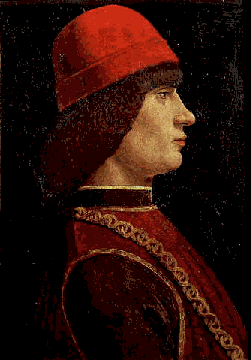 |
| 1500/50 | Senza titolo - Untitled (Gioco dell'Oca - Game of the Goose) Anonimo. 1500/1550. Legno con castoni d'avorio, pietre colorate - Wood inlaid with ivory, colored stones and tinted wood. 430 mm x 419 mm x 29 mm. © Metropolitan Museum of Art, New York. Chess. (Archivio n°1673). "... The oldest surviving Goose game board is that in the Metropolitan Museum, New York (Accession Number: 62.14, dimensions 430 mm x 419 mm x 29 mm.). It is made of ebonized wood, elaborately inlaid with ivory, horn and gold wire in a style associated with 16th century Gujarat in North India. However, the numbers in the spaces are in a western script consistent with Italian writing of the 15th century, suggesting that the board was made in Gujarat to an Italian design. A curious feature is that, though the board is in all other respects a classic Goose board, it lacks two of the hazards: the bridge and the inn. The explanation for this is not clear. There are various other mysteries: the prison space is occupied by a boat in the form of a Venetian galley, something not known in other Goose games, though a different form of boat is sometimes found. Also, the execution of the drawings on the playing spaces is distinctly strange and crude, contrasting sharply with the meticulous decorative inlay, suggesting that the supposed Indian craftsman had difficulty in producing these unaccustomed shapes. On its reverse, the board is laid out for chess and (to a non-European design) for a form of backgammon." (Adrian, Seville) Bibliography 1) DEPAULIS, Thierry: "Sur la piste du jeu de l’oie II". In: "Le Vieux Papier", fascicolo n°352, aprile 1999, pag. 269-270, Parigi. (Depaulis) 2) SEVILLE, Adrian: "Tradition and Variation in the Game of Goose". In: "Board Games in Academia III", Firenze, Aprile 1999 (aggiornamento del 2005). (Seville). 3) SEVILLE, Adrian: "Les mysteres du Jeu de l'Oie au Metropolitan Museum de New York". Journée d’étude Mardi 12 février 2013 à l’occasion de l’exposition "Art du jeu, jeu dans l’art. De Babylone à l’Occident médiéval", présentée au Musée de Cluny. 2013. (Seville) 4) SEVILLE, Adrian:"The Royal Game of the Goose four hundred years of printed Board Games". Catalogue of an Exhibition at the Grolier Club, February 23 - May 14, 2016. |  |
| 1517 | Johannes Reuchlin, detto anche Johann Reichlin o grecizzato in Kapnion, Capnio (Pforzheim, 29 gennaio 1455 - Stoccarda, 30 giugno 1522), è stato un filosofo, umanista e teologo tedesco. Nel 1517 pubblica "De Arte Cabbalistica". Bibliography 1) BUSI Giulio - CAMPANINI Saverio: "Johannes Reuchlin: l'Arte cabbalistica (De arte cabalistica)". Opus Libri, Firenze, 1996 (seconda edizione). 2) CAMPANINI Saverio: "La traduzione italiana del 'De Arte Cabalistica' di Johannes Reuchlin, in "Materia Giudaica", 1 (1996), pp. 4-7. 3) CAMPANINI Saverio: "Reuchlins jüdische Lehrer aus Italien". In: G. Dörner (a cura di), Reuchlin und Italien, Jan Thorbecke Verlag, Stuttgart 1999, pp. 69-85. 4) REUCHLIN, Johannes | 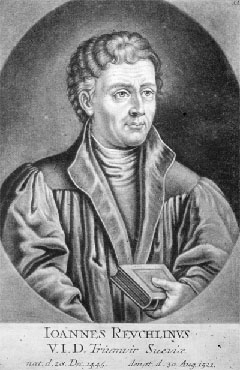 |
| 1534 | "La vie très horrifique du grand Gargantua" est un récit de François Rabelais (vers 1483-1553), publié à Lyon chez François Juste en 1534 ou 1535. L'ouvrage est réédité et corrigé plusieurs fois, jusqu'à l'édition définitive chez le même éditeur en 1542, que l'auteur, prudemment, expurge d'un certain nombre de railleries contre les théologiens de la Sorbonne. Dans le chapitre XXII il y a une liste des jeux, mais il n' y a pas le jeu de l'oie (pag. 87). "Rabelais, au retour d’un voyage en Italie publie, en 1534, “La vie horrifique du grand Gargantua”; il énumère deux cents jeux, le jeu de l’oie n’y figure pas." (Pierre Dietsch) Bibliography | 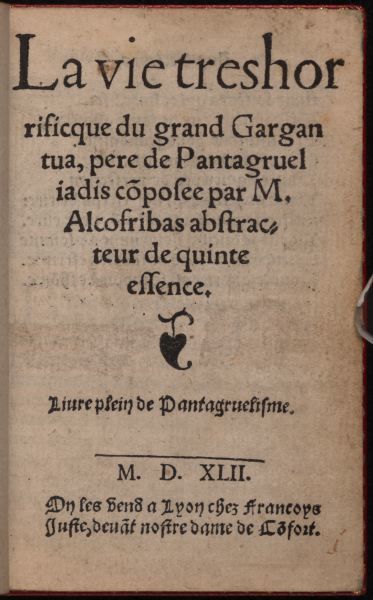 |
| 1546 | Rabelais François: “Tiers livre des faits et dits Héroïques du noble Pantagruel: composés par M. François Rabelais, Docteur en Médecine, et Calloier des Iles d'Hyeres)”. 1546. "...The earliest reference to the Game of the Goose appears in an obscure book of sermons for Advent by the Dominican Gabriele da Barletta in 1480. He speaks (disapprovingly) of playing games at Christmas and, moreover, of the need for large and small dice, to overcome the imperfections of vision due to old age. Si vult venire, in domum meam in istis festis paravi plura. Si voluerit ludere ad triumphos, sunt in domo; si a tavole habeo plura tabularia; si a locha habeo taxillos grossos et minutos. [If anyone comes to my house in this season, I have prepared several games. If he wishes to play at tarot, there are tarot cards in the house; if at backgammon [tavole], I have several boards; for goose I have both large and small dice.] This text is paraphrased by Rabelais in the Third Book of Pantagruel, published in 1546, which satirically relates the use of dice by Judge Bridoye (literally ”Bridlegoose” but meaning, colloquially, ”nincompoop”) in reaching legal decisions: for difficult cases the judge uses dice too small to see the numbers! In fact much of the Third Book can be interpreted as an ironic Goose game." (Adrian, Seville) Bibliography 1) GAIGNEBET, Claude: "Bridoye et le Jeu de l'Oie". (pag. 22). In “Hasard&Providence. XIVe-XVIIe siècles." XLIX Colloque International d'Etudes Humanistes. (Résumées des interventions) 3-9 Luglio 2006. (Gaignebet). 2) SEVILLE, Adrian: "Les mysteres du Jeu de l'Oie au Metropolitan Museum de New York" Journée d’étude Mardi 12 février 2013 à l’occasion de l’exposition "Art du jeu, jeu dans l’art. De Babylone à l’Occident médiéval" présentée au Musée de Cluny. 2013.(Seville). 3) GAIGNEBET, Claude: "Lettre à Julien sur Rabelais: le Tiers Livre et le Jeu de l'Oie". Lume, 2007. 4) GAIGNEBET, Claude: "La mythologie du jeu de l’oie", Besançon Saint Martin 2009. (Intervention de Mr. Claude Gaignebet ). 5) SEVILLE, Adrian: "The Royal Game of the Goose four hundred years of printed Board Games". Catalogue of an Exhibition at the Grolier Club, February 23 - May 14, 2016. | 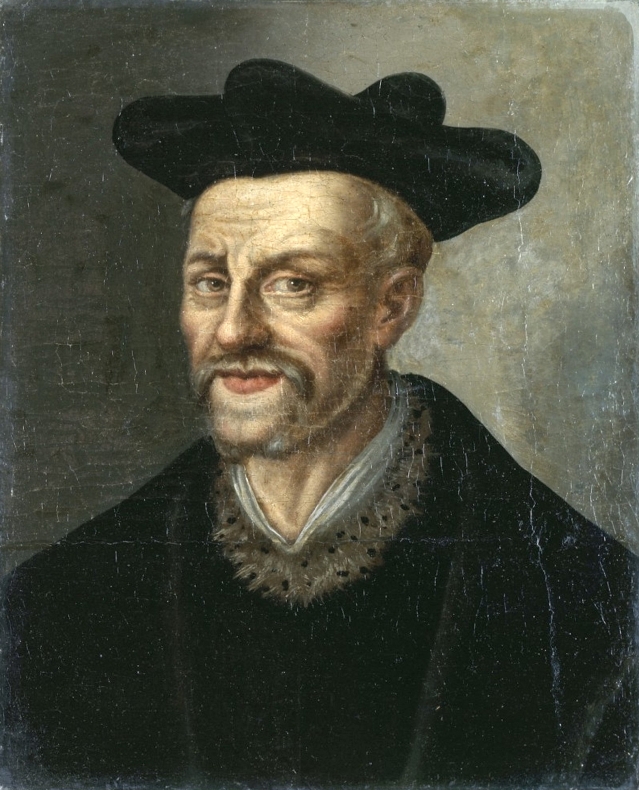 |
| 1550/90 | Giuoco dell’Oca – Game of the Goose (Arianna). Anonimo, 1550 - 1600. Disegnato a mano - Hand-drawn, 600mm x 450mm. Collezione L. Ciompi. (Arch. n°2260) Bibliography 1) SEVILLE, Adrian: "Tradition and Variation in the Game of Goose". In: "Board Games in Academia III", Firenze, Aprile 1999 (aggiornamento del 2005). (Seville). 2) LEESBERG, Marjolein: "El Juego Real de Cupido: a Spanish board game published in Antwerp, c. 1620." In: "Delineavit et Sculpsit" n°39, 2015. (Leesberg). | 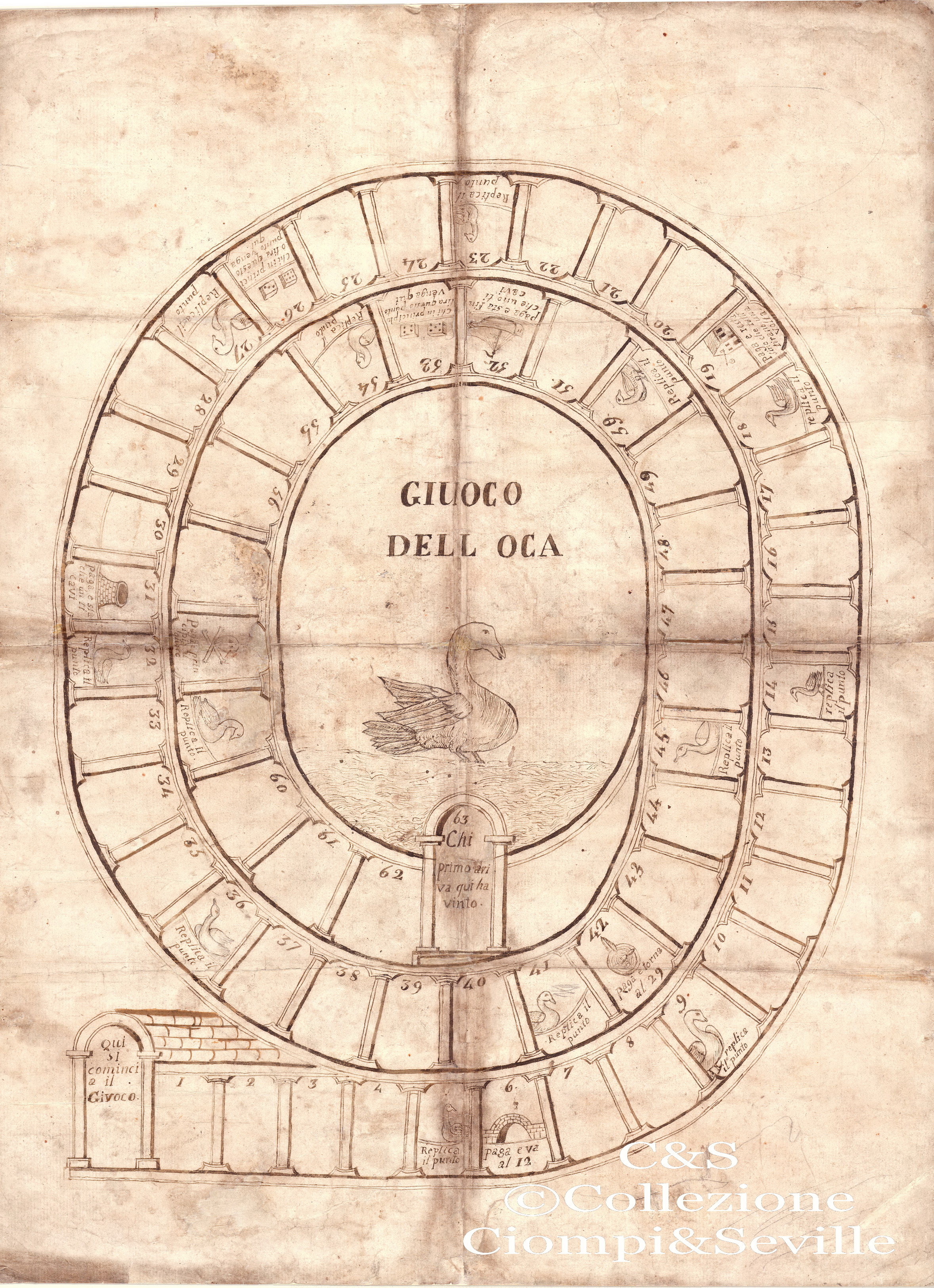 |
| 1560-1600 | Ulisse Aldrovandi: "De Ludis tum publicis tum privatis methodus" (1585?) Bologna, Biblioteca Universitaria. Ms Aldrovandi 21, Miscellanea vol. II, S. 25-30. "... A Bolognese manuscript, written about 1585 by the scholar Ulisse Aldovrandi (1522-1605), contains the first known description of the game and its rules, including variants on the latter as played in Bologna. (Leesberg, Marjolein) Bibliography 1) ZOLLINGER, Manfred: "Zwei unbekannte Regeln des Gaensespiels" In "Board Games Studies" Vol.6, CNWS Leiden. 2003. (Zollinger). 2) LEESBERG, Marjolein: "El Juego Real de Cupido: a Spanish board game published in Antwerp, c. 1620." In: "Delineavit et Sculpsit" n°39, 2015. (Leesberg). 3) GIAMMINUTI, Patrizia:"Il Gioco dell’Oca: una proposta iconografica." In "Ludica. Annali di storia e civiltà del gioco", 23, 2017 (Giamminuti). | 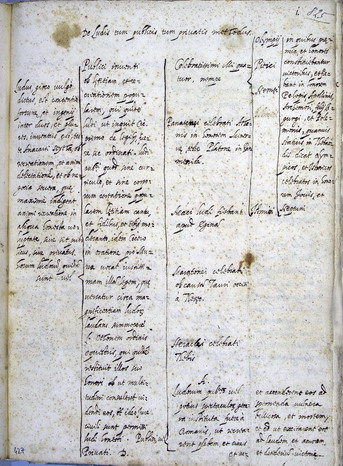 |
| 1562 | PIETER BRUEGEL o Brueghel il Vecchio (Breda, 1525/30ca - Bruxelles, 1569). Il pittore realizza il quadro "Trionfo della Morte" nel quale in basso a destra su un tavolo si notano delle tavole con disegnate delle oche. Bibliography | 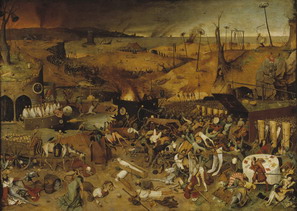 |
| 1567/80 | Il Bello et Dilettevole Giuoco dell'Oca. Gaspar ab Avibus Citadelensis formis Venetis, 1567 - 1580. Acquaforte (taille-douce) (ecthing), 580mm x 428mm. Collezione A. Toffanin. (Arch. n°2650) Nel centro scena di "Caccia allo Struzzo" che ricorda un disegno di Jan van der Straet, detto Giovanni Stradano (Bruges 1523-1605 Firenze) il quale ispirandosi agli arazzi della villa medicea di Poggio a Caiano realizzò 44 tavole incise da Galle ed editate ad Anversa nel 1578. Nell'esemplare simile di Gio. Ambrosio Perigo "Il Bello et Dilettevole Giuoco dell'Oca" facente parte della Collezione A. Milano e da quest'ultimo datato 1625ca, la scena centrale viene attribuita ad una incisione di Antonio Tempesta (1555-1630) sempre verosimilmente ispirata a un disegno di Giovanni Stradano che non incise mai i propri disegni. Questo esemplare firmato da Gaspar ab avibus risulta pertanto anteriore a quello della Collezione A. Milano e databile fra la pubblicazione delle tavole di Stradano (Anversa 1578) e la morte di Gaspare (1586/90). C'è da prendere però in considerazione anche il fatto che la più importante produzione conosciuta e datata di Gaspare Oselli è compresa fra il 1560 e il 1580 (divenendo successivamente editore a Venezia e Roma in società con il fratellastro Nicolò Nelli autore fra gli altri di un ritratto di Cosimo dei Medici) e che i disegni di Stradano (1567-1577) fossero già noti prima della loro pubblicazione ufficiale nel 1578 ad Anversa ad opera del Galle. Quindi possiamo datare questo gioco fra il 1567 e il 1580. Alla casella 31, il pozzo, l'autore si firma con il nome Oselo. Nell'incisione del titolo viene corretto un errore GIOCO-GIUOCO. Questo esemplare e il suo autore ispirato da Stradano conferma la stretta correlazione fra il "Gioco dell'Oca" e la famiglia dei Medici che ne donò una copia al Re di Spagna. Questo dono sembra avvenuto intorno al 1580 o nel 1576 come qualcuno ipotizza (Antonio Catalán, Fundación Joaquín Díaz) e quindi poco dopo o poco prima della stampa delle incisioni del Galle avvenuta nel 1578. Bibliography 1) BASAN, Pierre-François: "Dictionaire des graveurs anciens et modernes". Paris, 1767 (1a ed.). 2) GORI GANDELLINI Giovanni: "Notizie degli intagliatori con osservazioni critiche...", Volume 1, pag. 32 Siena 1808. 3) PIETRUCCI, Napoleone: "Biografia degli artisti Padovani". Pag. 99-100, 1858. (Gaspar ab Avibus). | 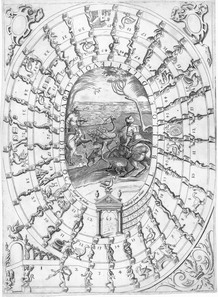 |
| 1572 | Antonio Lafreri (1512-1577 circa) il più grande stampatore e mercante di stampe attivo a Roma pubblica un catalogo del suo vastissimo assortimento, ma non vi include fogli di giochi. Il primo catalogo italiano che cita "Scacchiero con la sua Dichiarazione", il "Gioco del Pela Chiù", il "Gioco dell'Oca", il "Gioco del Gambaro" è quello di Andrea e Michel'Angelo Vaccari stampatori romani che lo pubblicarono nel 1614 (i cataloghi sono contenuti nella pubblicazione di Ehrle del 1908). Bibliography 1) EHRLE, Francesco: "Roma prima di Sisto V. La pianta di Roma Du Pérac-Lafréry…", Roma 1908. Nel libro: "Indice e nota particolare di tutte le stampe di rame, che si ritrovano al presente nella Stamparia di Andrea e Michel'Angelo Vaccari... (1614)". 2) MILANO, Alberto - CRIPPA, Giuliano: "GIOCHI DA SALOTTO. GIOCHI DA OSTERIA nella vita milanese dal Cinquecento all'Ottocento". Catalogo Mostra Palazzo Morando, Via S. Andrea 6 Milano. (Con la collaborazione di Giuliano Crippa). Edizioni Gabriele Mazzotta, 2012. | 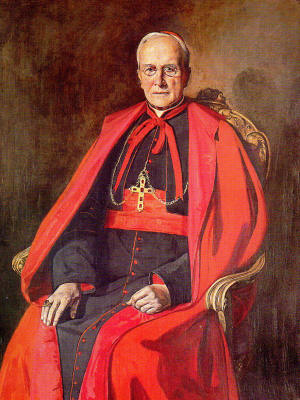 |
| 1574/87 | Francesco dei Medici .... "An obvious question is why should Francesco send such a game to Philip II, a man of serious temperament not known for being interested in gaming? The answer is that both were keenly interested in numerology and symbolism. The Medici court was a hotbed of philosophical activity in these areas, as Frances Yates observes: Pico della Mirandola [1463–94] belonged to the brilliant circle around the Medici court in Florence which included another famous philosopher, Marsilio Ficino [1433–99]. Ficino and Pico were founders and propagators of the movement loosely known as Renaissance Neo-Platonism…. It was Pico who introduced Cabala into the Renaissance synthesis. And, like Ramon Lull, it was as a Christian that Pico valued Cabala. Although there is no evidence that either philosopher was concerned directly with the Goose game, there is evidence (below) that Ficino was keenly aware of the significance of the number 63, which is the goal of that game." (Adrian Seville) Bibliography 1) SEVILLE, Adrian: "The Royal Game of the Goose four hundred years of printed Board Games". Catalogue of an Exhibition at the Grolier Club, February 23 - May 14, 2016. | 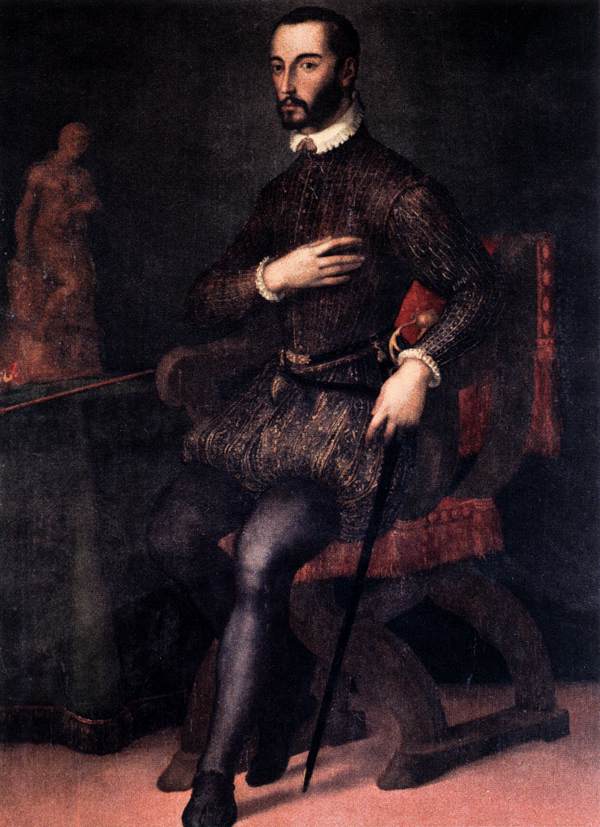 |
| 1580ca | "Il Diletevole Gioco del Ocha - The Agreeable Game of the Goose". Anonimo, 1580ca. Stampa su legno (bois gravé) (woodcut), 465mm x 345mm. "British Museum" © The Trustees of the British Museum (Arch. n°250), Collezione Ciompi (Arch. n°2317). Bibliography 1) SEVILLE, Adrian: "Tradition and Variation in the Game of Goose". In: "Board Games in Academia III", Firenze, Aprile 1999 (aggiornamento del 2005). ((Seville). 2) COLLAR Caceres, Fernando: "El Tablero italiano de la 'Filosofia Cortesana' de Alonso de Barros (1588); la carrera de un hombre de corte". Anuario del Departamento de Historia y Teoria del Arte. Vol. 21, 2009, (pag. 81-104) 2009.(Collar). 3) SEVILLE, Adrian: "The Royal Game of the Goose four hundred years of printed Board Games". Catalogue of an Exhibition at the Grolier Club, February 24 - May 14, 2016. | 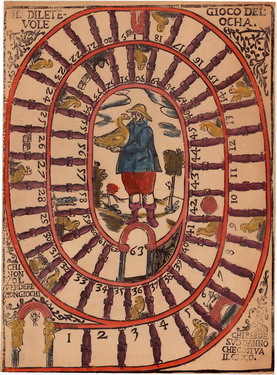 |
| 1580ca | Il Novo Gioco de Loca - The New Game of the Goose. Anonimo. 1580ca. Acquaforte – Etching. 480mm x 355mm © Civica Raccolta delle Stampe A. Bertarelli, Milano. (Arch. n°252) Bibliography 1)COLLAR Caceres, Fernando: "El Tablero italiano de la 'Filosofia Cortesana' de Alonso de Barros (1588); la carrera de un hombre de corte". Anuario del Departamento de Historia y Teoria del Arte. Vol. 21, 2009, (pag. 81-104) 2009. (Collar). 2) SEVILLE, Adrian: "Tradition and Variation in the Game of Goose". In: "Board Games in Academia III", Firenze, Aprile 1999 (aggiornamento del 2005). (Seville). 3) SEVILLE, Adrian: "The Royal Game of the Goose four hundred years of printed Board Games". Catalogue of an Exhibition at the Grolier Club, February 24 - May 14, 2016. |  |
| 1585 | Lettera di Filippo II a sua figlia Catalina (Torino), Monzon, 23 agosto 1585 "... vuestra hermana se hace tahùr de un nuevo juego que ha traido Gonzalillo..." Bibliography 1) BARANDA LETURIO, Nieves: “Las cartas de un gentilhombre de placer: Gonzalo de Liaño, "trompeta en esta corte", in: "Lectura y signo: revista de literatura", Año 2009, Número 4, Fascículo: 1, Universidad de Léon. (Baranda Leturio). 2) BOUZA ALVAREZ Fernando J. : "Cartas de Felipe II a sus hijas". Turner, Madrid. 1998. | 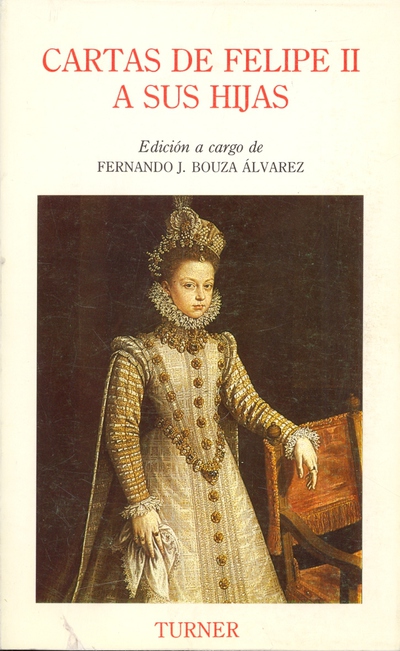 |
| 1585 | Letter by Gonzalo de Liaño to Francesco I de’ Medici 24 August 1585. (Archivio Storico di Firenze, Filza 781, foglio 126) "... le voy dando relaçiòn de todo yo he hechado maldiçiones a un criado de Luys Dobada que ha traydo un juedo endimoniado que se llama el juego de la occa que se juega con dos dados y es todo por q(uen)ta si se comiença y se hechan seis con los dados dan en una Puente y meten un Real el que esta en la hostedìa juega dos vezes, ay dos pozos y muerte que se vuelve a jugar de nuevo. es juego que se juega en la Toscana, que plegue a Dios que quien le hizo yo le vea que mado porque me anganado el prìnçipe y la infanta y Luis Tristàn quarenta escudos y gusta el rey de verme picado yo creo que no gustara màs... Monçòn y de agosto 24 1585... Gonçalo de Liaño. "... letter by Gonzalo de Liaño to Francesco I de’ Medici dated 24 August 1585. The writer (known as “Gonzalillo”) was Philip II’s court jester. He writes: “Accursed be your servant Luis Dovara, who brought along a devilish game called Gioco dell’Oca, played with two dice.... It is a game played in Tuscany and God grant that he who made it may burn, for to the Prince and the Infanta and Luis Tristan I have lost 40 Scudi.” (Adrian Seville) "...A contemporary source, much quoted among historians of the game, claims that it was invented in Florence and pleased Francesco de’ Medici, Grand Duke of Tuscany, who went so far as to present an exemplar, probably a precious painted or inlay version, to Philip II of Spain, around 1576-’80. In 1585, Philip II’s court jester, Gonzalo de Liaño, complained in a letter to Francesco de’ Medici about the debts he had incurred due to a new game, called Game of the Goose, which was played in Tuscany and had been brought to Spain by the Medicean agent Luigi Dovara. (Leesberg, Marjolein) Bibliography 1) BARANDA LETURIO, Nieves: “Las cartas de un gentilhombre de placer: Gonzalo de Liaño, "trompeta en esta corte", in: "Lectura y signo: revista de literatura", Año 2009, Número 4, Fascículo: 1, Universidad de Léon. (Baranda Leturio). 2) COLLAR Caceres, Fernando: "El Tablero italiano de la 'Filosofia Cortesana' de Alonso de Barros (1588); la carrera de un hombre de corte". Anuario del Departamento de Historia y Teoria del Arte. Vol. 21, 2009, (pag. 81-104) 2009. (Collar). 3) KUBERSKY-PIREDDA, Susanne - SALORT PONS, Salvador": "Travels of a Court Jester: Gonzalo de Liagno, Art Agent at the Court of King Philip II of Spain", in: "Double Agents. Cultural and Political Brokerage in Early Moder Europe", Ed. Marika Keblusek and Badeloch Vera Noldus. Brill, Leiden BOSTON, 2011 pp. 213-232, 2011. (Kubersky Piredda - Salort Pons). 4) KUBERSKY-PIREDDA, Susanne - SALORT PONS, Salvador: "Ein Hofnarr als Agent. Zum diplomatischen Geschenkwesen am Hof Philipps II", in: "Gedruckt mit freundlicher Foerderung der Gerda Henkel Stiftung", 2011. (Kubersky Piredda - Salort Pons). 5) INFANTES, Víctor:"Una pintura que se contiene en un pliego grande". El tablero de la Filosofía Cortesana de Alonso de Barros: una Oca emblemática entre Espagna e Italia (1587 y 1588). In "IMAGO", Revista de Emblemática y Cultura Visual. N°. 2, 2010, pp. 127-135 2010.(Infantes). 6) LEESBERG, Marjolein: "El Juego Real de Cupido: a Spanish board game published in Antwerp, c. 1620." In: "Delineavit et Sculpsit" n°39, 2015. (Leesberg). 7) GIAMMINUTI, Patrizia: "Il Gioco dell’Oca: una proposta iconografica." In "Ludica. Annali di storia e civiltà del gioco", 23, 2017 (Giamminuti). | 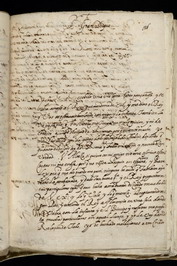 |
| 1587 | FILOSOFIA CORTESANA Alonso de Barros was a minor noble who served as an aposentador in the court and is best known for his collection of proverbs, "Proverbios morales", 1598. In 1587 he published the "Filosofía Cortesana" in Madrid, a short book describing the game and how to play it. This book is best-known now among Hispanists because it contains an introductory sonnet written by Miguel de Cervantes. A copy of this edition is in the Emmanuel College Library and was located by Edward M. Wilson in the 1960s. A second Spanish-language edition was published by Josep Cacchij in Naples in 1588. It seems likely that this gameboard would have accompanied this edition. Bibliography 1) CARRERA, Pietro: "Il Gioco degli Scacchi", Militello, 1617. (Carrera). 2) MILLAN, José Martínez: "Filosofía Cortesana de Alonso de Barros (1587)". En "Política, religión e inquisición en la España moderna: homenaje a Joaquín Pérez Villanueva", 1996. (Millan). 3) COLLAR Caceres, Fernando: "El Tablero italiano de la 'Filosofia Cortesana' de Alonso de Barros (1588); la carrera de un hombre de corte". Anuario del Departamento de Historia y Teoria del Arte. Vol. 21, 2009, (pag. 81-104) 2009.(Collar). 4) ZOLLINGER, Manfred: "Un Jeu retrouvé: la Filosofia Cortesana d'Alonso De Barros". In: "Le Vieux Papier", fascicolo n°395 gennaio 2010, Parigi. (Zollinger). 5) ZOLLINGER, Manfred: "Zwei unbekannte Regeln des Gaensespiels" In "Board Games Studies" Vol.6, CNWS Leiden. 2003. (Zollinger). 6) INFANTES, Víctor: "Una pintura que se contiene en un pliego grande". El tablero de la Filosofía Cortesana de Alonso de Barros: una Oca emblemática entre Espagna e Italia (1587 y 1588). In "IMAGO", Revista de Emblemática y Cultura Visual. N°. 2, 2010, pp. 127-135 2010.(Infantes). 7) LEESBERG, Marjolein: "El Juego Real de Cupido: a Spanish board game published in Antwerp, c. 1620." In: "Delineavit et Sculpsit" n°39, 2015. (Leesberg). 8) GIAMMINUTI, Patrizia: "Il Gioco dell’Oca: una proposta iconografica." In "Ludica. Annali di storia e civiltà del gioco", 23, 2017 (Giamminuti). | 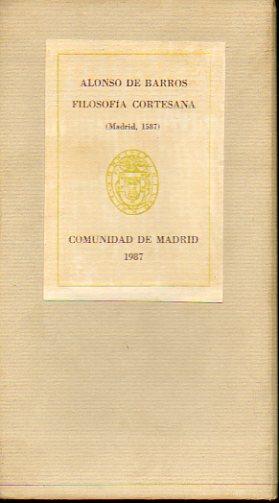 |
| 1588 | "Il Novo Bello et Piacevole Gioco della Scimia" - "The New Beautiful and Enjoyable Game of Apes". Gatti Altiero, 1588. Acquaforte - Taille-douce - Engraving. 515mm x 383mm. “British Museum” © The Trustees of the British Museum. Registration number: 1869, 0410. 2461.(Arch. n°1104) (Gioco dell'Oca variante) Bibliography 1) SEVILLE, Adrian: "Tradition and Variation in the Game of Goose". In: "Board Games in Academia III", Firenze, Aprile 1999 (aggiornamento del 2005). (Seville). 2) SEVILLE, Adrian: "The Royal Game of the Goose four hundred years of printed Board Games". Catalogue of an Exhibition at the Grolier Club, February 24 - May 14, 2016. | 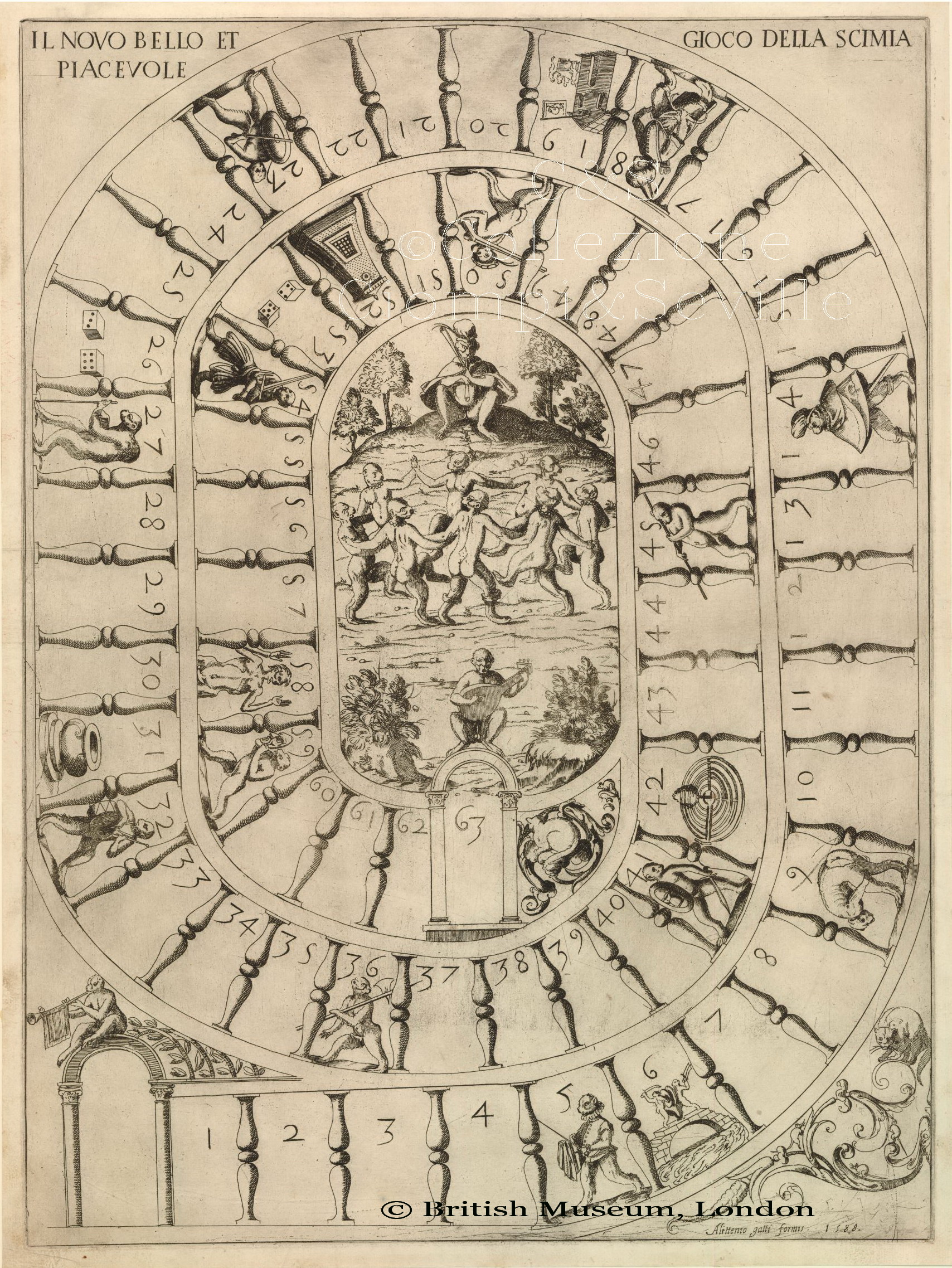 |
| 1588 | “Filosofia Cortesana”, De Barros Alonso. 1588. Acquaforte -Taille-douce - Engraving, 531mm x 404mm. “British Museum” © The Trustees of the British Museum. Registration number: 1869, 0410. 2463. (Arch. n°1103) "... According to Carrera, the publication of the Game of the Goose in Spain inspired the invention of several closely related games such as the Filosofía Cortesana. A unique impression in the British Museum proves that the Filosofía Cortesana indeed existed as a copper engraving, published with a royal privilege in 1588 in Naples by Mario Cartaro. The inventor, Alonso de Barros, wrote an extensive description of the game, which was of a philosophical and didactive nature on fate and fortune of ambitious men at court. The lay-out of the game was clearly inspired by Italian impressions of the Game of the Goose such as an anonymous, possibly Venetian print of c. 1580-’85, the earliest impression of the Game of the Goose known to date. (Leesberg Marjolein) Bibliography 1) CARRERA, Pietro: "Il Gioco degli Scacchi", Militello, 1617. (Carrera). 2) MILLAN, José Martínez: "Filosofía Cortesana de Alonso de Barros (1587)". En "Política, religión e inquisición en la España moderna: homenaje a Joaquín Pérez Villanueva", 1996. (Millan). 3) COLLAR Caceres, Fernando: "El Tablero italiano de la 'Filosofia Cortesana' de Alonso de Barros (1588); la carrera de un hombre de corte". Anuario del Departamento de Historia y Teoria del Arte. Vol. 21, 2009, (pag. 81-104) 2009.(Collar). 4) ZOLLINGER, Manfred: "Un Jeu retrouvé: la Filosofia Cortesana d'Alonso De Barros". In: "Le Vieux Papier", fascicolo n°395 gennaio 2010, Parigi. (Zollinger). 5) ZOLLINGER, Manfred: "Zwei unbekannte Regeln des Gaensespiels" In "Board Games Studies" Vol.6, CNWS Leiden. 2003. (Zollinger). 6) INFANTES, Víctor: "Una pintura que se contiene en un pliego grande". El tablero de la Filosofía Cortesana de Alonso de Barros: una Oca emblemática entre Espagna e Italia (1587 y 1588). In "IMAGO", Revista de Emblemática y Cultura Visual. N°. 2, 2010, pp. 127-135 2010.(Infantes). 7) LEESBERG, Marjolein: "El Juego Real de Cupido: a Spanish board game published in Antwerp, c. 1620." In: "Delineavit et Sculpsit" n°39, 2015. (Leesberg). 8) SEVILLE, Adrian: "Tradition and Variation in the Game of Goose". In: "Board Games in Academia III", Firenze, Aprile 1999 (aggiornamento del 2005). ((Seville). 9) SEVILLE, Adrian: "The Royal Game of the Goose four hundred years of printed Board Games". Catalogue of an Exhibition at the Grolier Club, February 24 - May 14, 2016. 9) GIAMMINUTI, Patrizia: "Il Gioco dell’Oca: una proposta iconografica." In "Ludica. Annali di storia e civiltà del gioco", 23, 2017 (Giamminuti). | 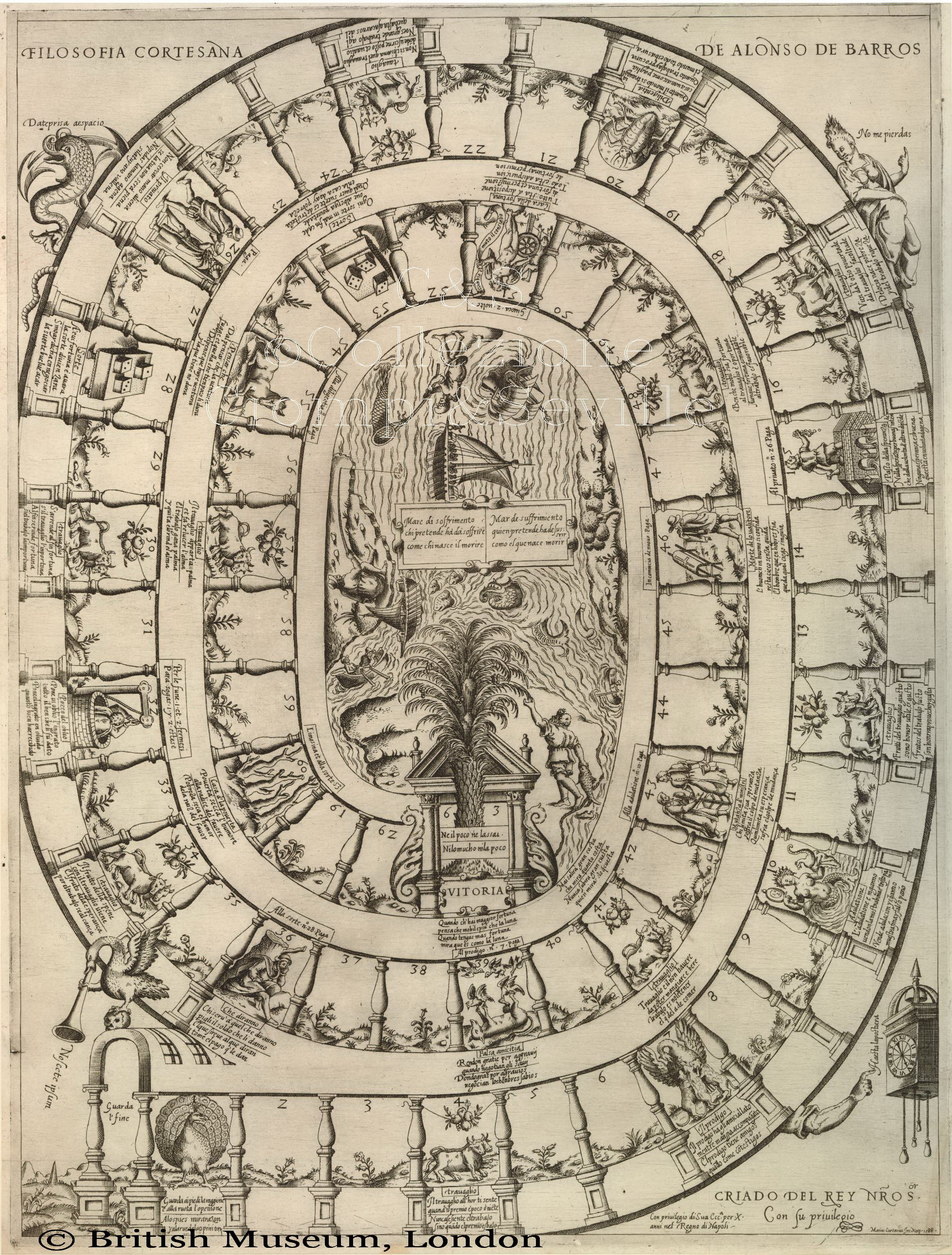 |
| 1589 | "Das Khurtzweillige Fortuna-Spill" - (The Entertaining Game of Fortune). Gioco che l'Arciduca Carlo d'Austria fece scolpire su pietra da Michael Holzbecher per i propri figli. Questo gioco è un classico Gioco dell'Oca con al centro incisa la data della sua realizzazione (1589) che ci consente di considerarlo come il più antico gioco datato di lingua germanica. A sinistra ed in basso note di brani musicali. L'esemplare è conservato a Graz presso il "Landesmuseum Johanneum". (Arch. n°2529) .... "Although it does not employ the goose as symbol of good luck, a game carved on stone by Michael Holzbecher for Archduke Karl of Austria in 1589 is significant. This, Das khurtzweillige Fortuna-Spill (The Entertaining Game of Fortune, now in the Landesmuseum Johanneum in Graz, Austria) is in fact a classic Goose game except for the replacement of the geese by the symbol of Fortune. An interesting point is that it is decorated with words and music of drinking songs, suggesting that this was not a game for children." (Adrian Seville) Bibliography 1) SEVILLE, Adrian: "The Royal Game of the Goose four hundred years of printed Board Games". Catalogue of an Exhibition at the Grolier Club, February 24 - May 14, 2016. 2) LEESBERG, Marjolein: "El Juego Real de Cupido: a Spanish board game published in Antwerp, c. 1620." In: "Delineavit et Sculpsit" n°39, 2015. (Leesberg). 3) ZOLLINGER, Manfred: "Zwei unbekannte Regeln des Gaensespiels" In "Board Games Studies" Vol.6, CNWS Leiden. 2003. (Zollinger). 4) MILANO, Alberto - CRIPPA, Giuliano: "GIOCHI DA SALOTTO. GIOCHI DA OSTERIA nella vita milanese dal Cinquecento all'Ottocento". Catalogo Mostra Palazzo Morando, Via S. Andrea 6 Milano. (Con la collaborazione di Giuliano Crippa). Edizioni Gabriele Mazzotta, 2012. 5) WILCKENS Von, L.: "Spiel, Spiele, Kinderspiel", Catalogo Mostra. Germanisches Nationalmuseums, Nuernberg 1985. | 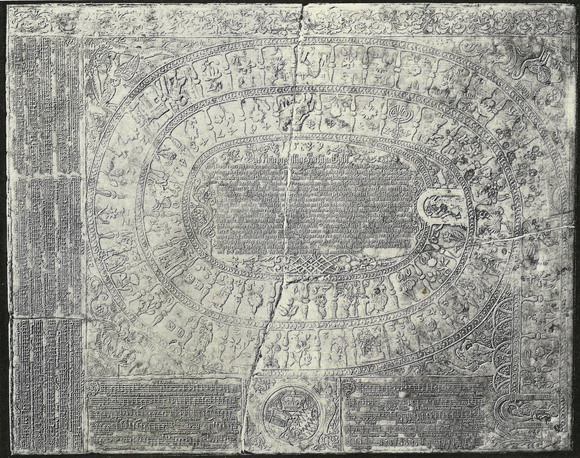 |
| 1595 | Sebastian Vranckx (1573 - 1647): "Una festa nel parco del Duca di Mantova (A Feast in the park of the Duke of Mantua), 1595 circa. (Musée des Beaux-Arts, Rouen). Rappresentazione di un tipico giardino rinascimentale in cui si ritrovano elementi iconografici che vengono riproposti in alcuni giochi. "This painting belongs to a particular category of landscape painting, that of the idealised garden. At the end of the 16th century and the beginning of the 17th, Sebastian Vranckx, alongside his contemporaries Louis de Caullery and Lucas Van Valkenborch, was an exponent of this tradition in Flemish painting. Every aspect of this picture is chosen to create an ideal vision of an Italian Renaissance garden: its porticoed pavilions, its walkways and parterres depicted with strict adherence to the rules of perspective, the fountain and decorative antique statues in their Mannerist poses; each element is placed to create a whole that harmonises perfectly. The idyllic setting is naturally dedicated to the pleasures of love. In the foreground, a picnic is taking place in which erotic allusions abound – such as the lute player, the shape of the fruit and the young man who is pouring the lady her drink from a height. The sculptures at the corners of the garden represent Ceres, the goddess of corn, on the right, and Bacchus, god of wine, on the left. For anyone viewing the picture at the time, there is clear reference to the maxim of the Latin poet Terence, ‘Without Ceres and Bacchus, Venus would freeze.’ Another sculpture of Bacchus has pride of place in the centre of the painting, above a couple strolling under a trellis tunnel. In the pavilion on the right hand side, a table is being laid for a feast, and in the one on the left, there is further erotic innuendo in the game of billiards that is underway." Bibliography 1) SEVILLE, Adrian: "The Garden of the Goose". In: Garden History 49:1, July 2021, pp. 33-52. 2) MacNEIL, Anne: "The Nature of commitment: Vincenzo Gonzaga’s patronage strategies in the wake of the fall of Ferrara." Renaissance Studies 16, 3, September 2002. 3) HONIG, Elizabeth A.: "Painting & the Market in Early Modern Antwerp". New Haven: Yale University Press, 1998. |  |
| 1595/6 | Il "Gioco dell'Oca" a 6 voci, estratto dall'Opera "Triaca Musicale" di Giovanni Croce Chiozzotto, in Venetia appresso Giacomo Vincenti, 1596. "The earliest reliably dated and also most charming proof for the existence of the Goose Game in Italy comes from Venice where the Triaca Musicale ("Musical Cure for Animal Bites") of Giovanni Croce (1557 to 1609) was published in 1595. This composition includes a musical Capriccio for six voices with the title "Il Gioco dell'Oca" that explains the rules of the game and describes its stations, such as the Bridge, the Inn, the Well, and the "Boat" which was the penal galley or Prison, together with the payments each of these required the players to make." Il Giuoco dell’Oca Prima parte Hor che siam qui d'intorno in così nobil loco,/ Facciam Facciam un Gioco. Dite voi Dame a che giocar vogliamo,/ Che qui pronti noi siamo. Giochiam Giochiam all'Occa/ A voi Signora tocca. E pria ch'il Gioco si comincia poi,/ Il premio ponga ciasched’un de noi. Eccoci pronti, eccoci tutti uniti,/ Lieti, pronti et arditi. Ecco il Gioco, ecco i Dadi,/ E i premi sian delli più fortunati. Seconda parte A voi, Signora, tocca il primo tiro./ Sei e tre, s'io non erro è quel ch’ io miro. Dite il ver dite il ver/ Dite il ver dite il ver Hor passate al ventisei/ Io pur tirar vorrei. Tirate a fè, che sete giunto nell'Osteria, Signore/ Qui vi convien pagar per uscir fuore. Ecco che tiro anch'io./ O buon per Dio. Nella Cisterna entrate e state/ E il premio pagate e state. E state tanto poi/ Ch'altri venga per voi. Chi tocca dietro tiri/ Perché senz’altro indugio e miri. Pagate se volete/ Perché nel Labirinto sete Ecco il punto or or pagate/ E indietro poi tre punti ritornate Tocca a voi il tir or ora./ Sì sì Signora Cinque e quattro vedete/ Cinquantatre di punto fatt’avete Tocca a voi il tir or ora./Sì sì signora Tirate signor Conte/ Voi sete al Ponte Pagate e dopo poco/ Ritornerete a cominciar il Gioco A me tocca a tirare/ Ecco che vi convien l’Oca passare Or qui fermate il segno/ Senza poner il pegno A me tirar pur tocca / O là passate l’Occa E nella Barca entrate et ivi state/ Et il premio pagate E là perd’il mio tir or ora/ Perché nella Cisterna io fo’ dimora Ecco il tiro e la sorte/ Che sete in Morte Pagate pur Signor/ pagate pur Signor E vi convien tornare/ Dal principio del gioco à cominciare Ora tirar vogl’io/ Quattr’e sei per mia fe’ ch’el Gioco è mio Fate Signor el conto/ Signor Signor Sessantatre di punto Signora Signora vinto avete/ Or li premi prendete E noi per farle honore/ Cantiamo a tutte l’hore Viva viva viva l’amore,/ Viva viva viva l’amore. Bibliography 1) Croce Giovanni (Chioggia 1557 - Venezia 15/05/1609). 2) IMSLP Petrucci Music Library Triaca musicale (Croce, Giovanni). 3) "Il Gioco dell'Occa" (from "Triaca musicale", by Giovanni Croce). 4) LEESBERG, Marjolein: "El Juego Real de Cupido: a Spanish board game published in Antwerp, c. 1620." In: "Delineavit et Sculpsit" n°39, 2015. (Leesberg). | 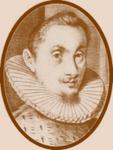 |
| 1597 | Wolfe John: "Copyright di un tavola di mastro Hartwelles registrata presso lo "Stationer's Hall" di Londra il 16 giugno 1597 con il nome di "The New and Most Pleasant Game of the Goose". "... It is remarkable that the game of goose came to England from Italy so soon after its invention. It was duly registered by John Wolfe at Stationers Hall in London as "The Newe and Most Pleasant Game of the Goose" on 16 June 1597. Much is known about Wolfe: he was apprenticed to train as a printer in London, became a master printer in Florence but returned to England to become a high official of the Stationer's Company and, in 1593, Printer to the City of London [Huffmann 1988]. However, we do not have the registered copy of the imported game itself." (Adrian Seville) The Italian prints often have the title "new Game of the Goose" [novo gioco de loca], apparently to distinguish them from an older version. In England ’the newe and most pleasant game of the Goose’ was entered in the Stationer’s Register on 16 June 1597 by John Wolfe, who had learned the trade of print publisher in Florence. However, no impressions of this game have been traced, only late-seventeenth-century English games of the goose in print are known. (Marjolein Leesberg) The publisher John Wolfe entered ‘the newe and most pleasant game of the Goose’ in the Registers of the Company of Stationers of London on 16 June 1597. No impressions of this game are traced but in view of the similar title and the fact that Wolfe learned the trade of print publisher in Florence, it can be assumed that it was based on the Italian game board. This is affirmed by the fact that the earliest surviving English Game of the Goose is closely related to its Italian predecessor. It was printed and sold by John Overton in London, about 1690. In that same year, the Game of Cupid appeared in England. The printed board was copied after an earlier Dutch example, where it was known as the Game of the Snake. As opposed to other European countries The Royal Pastime of Cupid or Entertaining Game of the Snake became very successful in England, where it still appeared about 1850, published in London by R.H. Laurie. (Marjolein Leesberg) (...) According to John Wolfe’s DNB entry, after serving some time as an apprentice to the printer John Day, Wolfe spent some time in Florence between 1576-1579. On his return to England he repeatedly printed works that were privIleged to others and he also agitated against printing restrictions to the extent that he was imprisoned twice. However, the turbulence had subsided by the mid-1580s and Wolfe joined the Stationers Company (he was originally a member of the Fishmonger’s Company) and he went on to become Beadle of the Stationer’s Company (1587-1598) and Printer of the City of London (1593-1601). Wolfe’s DNB entry notes that he printed many Italian works and, while the Florentine connection may be no more than a coincidence, it’s tempting to speculate that Wolfe may have encountered The Game of the Goose in Florence in the 1570s and brought a copy back to London which he subsequently printed in translation. (Eddie Duncan) Bibliography 1) SEVILLE, Adrian:"Tradition and Variation in the Game of Goose", in: "Board Games in Academia III", Firenze, Aprile 1999 (aggiornamento del 2005). (Seville). 2) LEESBERG, Marjolein: "El Juego Real de Cupido: a Spanish board game published in Antwerp, c. 1620." In: "Delineavit et Sculpsit" n°39, 2015. (Leesberg). 3) DUGGAN, Eddie:"The Royal Pastime of Cupid: three early printed board games in the Bodleian Library's, John Johnson Collection of Printed Ephemera". University of Suffolk Department of Science and Technology, 2017.(Duggan). | 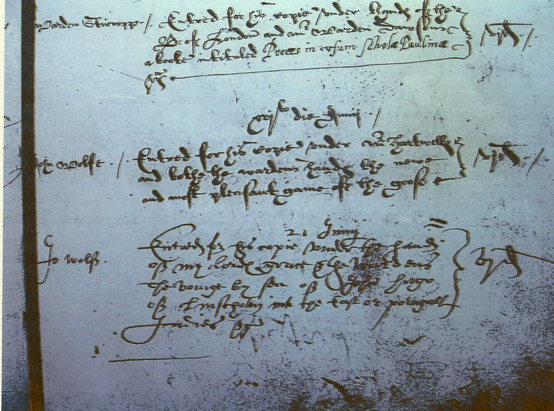 |
| 1597-1601 | Le Jeu de l'Oye Renouvellé des Grecs. Jeu de Grand Plaisir, comme aujourd'huy Princes&Grands Seigneur le prattiquent. A Lyon par les heritiers de Benoist Rigaud. Wolfenbuetter, Herzog-August Bibliothek IH 624.
((Arch. n°1843) .... "Another classic Goose game, this time from France, also dates from about 1598, with the imposing title: LE IEV DE L’OYE RENOVVELLE DES GRECS, IEV de grand plaisir, comme auiourd’huy Princes & grands Seigneur le practiquent. Publication details are given as “A Lyon par les heretiers de Benoist Rigaud.” This unique woodblock print, in the Herzog-August Library, Wolfenbüttel, is the prototype for the classic French Jeu de l’Oie. The title of the game claims that it is “renewed from the Greeks” and that it is “today practiced by great lords and princes.” The first is a reference to the belief that, since the Greeks of the Iliad played games of chance, the Game of the Goose could be traced to that lineage. There is no solid evidence to confirm this connection, though the claim is frequently found in French Jeux de l’Oie during the succeeding centuries. The second claim, that the game is played by princes and great lords, may be a reference to aristocratic origins or may simply be a statement of fact." (Adrian Seville) "Nor is an impression known of a jeu de l’oye, mentioned in the inventory of the Parisian publisher Jean II de Gourmont (1535-1598). The earliest preserved French impression appeared c. 1600 in Lyon, in woodcut, published by the heirs of Benoît Rigaud. It differs from the Italian ones in lay-out, being of landscape format. The title, printed with the rules in the central field, gives a puzzling clue to the history of the game: ‘Game of the Goose, renewed from the Greek’ [Le Jeu de l’Oye, renouvellé des Grecs]. Later French games keep referring to this undocumented Greek origin. The subtitle, ‘Game of much joy, as today it is practised by Princes and noble Lords’ [Jeu de grand plaisir, comme auiourd’huy Princes & grands Seigneur le practiquent], distinguishes this rather crude woodcut version from the elaborate ones, on marble or of inlaid wood and silver, played by royals and nobles. Obviously, the cheaper printed versions were meant to reach a much wider clientele." (Leesberg Marjolein) Bibliography 1) DEPAULIS, Thierry: "Sur la piste du jeu de l’oie". In: "Le Vieux Papier", fascicolo n°345, ottobre 1997, Parigi. (Depaulis) 2) SEVILLE, Adrian: "The Royal Game of the Goose four hundred years of printed Board Games". Catalogue of an Exhibition at the Grolier Club, February 24 - May 14, 2016. 3) LEESBERG, Marjolein: "El Juego Real de Cupido: a Spanish board game published in Antwerp, c. 1620." In: "Delineavit et Sculpsit" n°39, 2015. (Leesberg). | 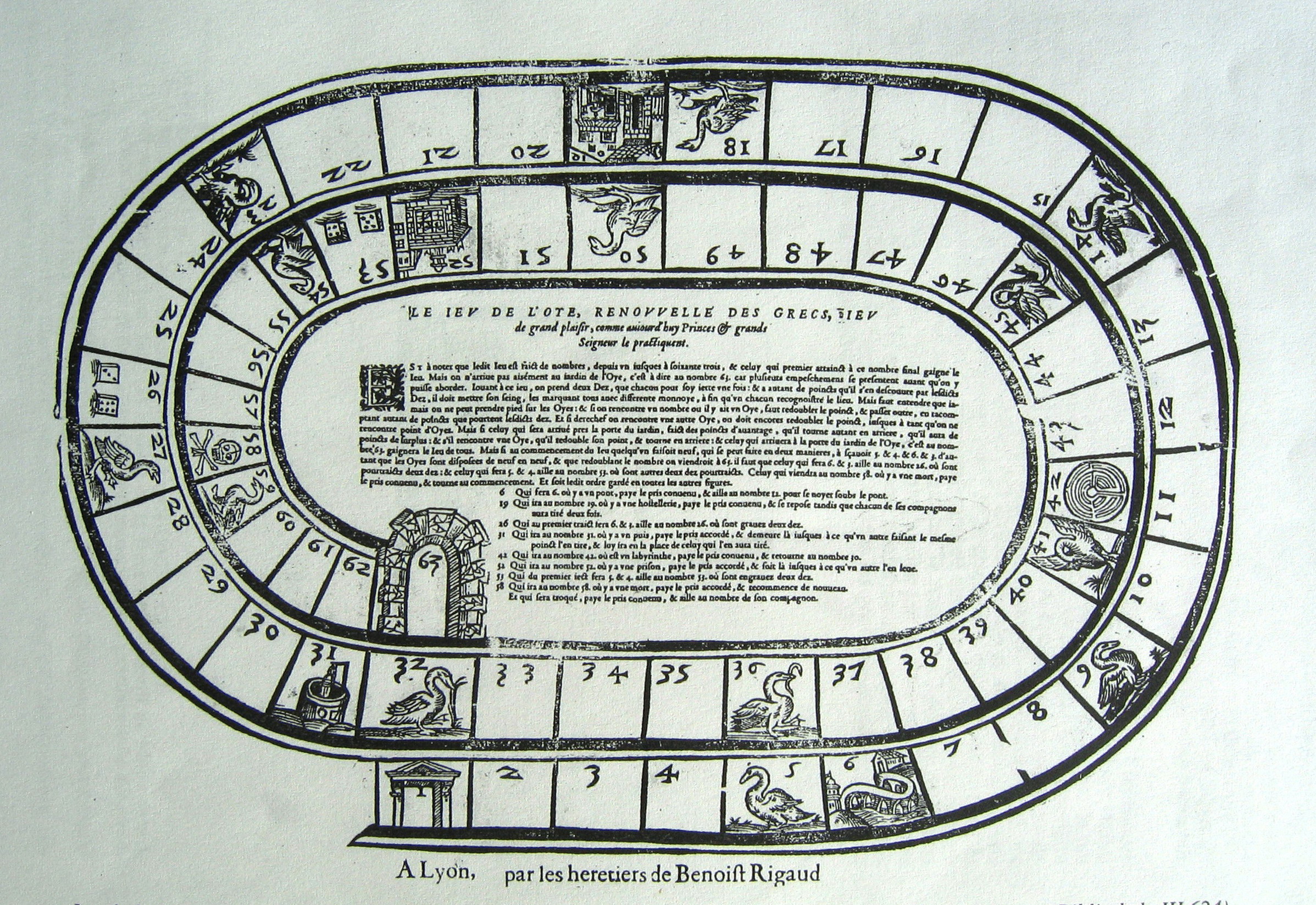 |
| 1598 | Il Nuovo et Piacevole Gioco dell Ocha - The New and Enjoyable Game of the Goose. Gargano Lucchino, 1598. Acquaforte - Engraving, 507mm x 378mm. “British Museum” © The Trustees of the British Museum. Registration number: 1869, 0410. 2465.(Arch. n°1108) Bibliography 1) LEESBERG, Marjolein: "El Juego Real de Cupido: a Spanish board game published in Antwerp, c. 1620." In: "Delineavit et Sculpsit" n°39, 2015. (Leesberg). 2) GIAMMINUTI, Patrizia:"Il Gioco dell’Oca: una proposta iconografica." In "Ludica. Annali di storia e civiltà del gioco", 23, 2017 (Giamminuti). | 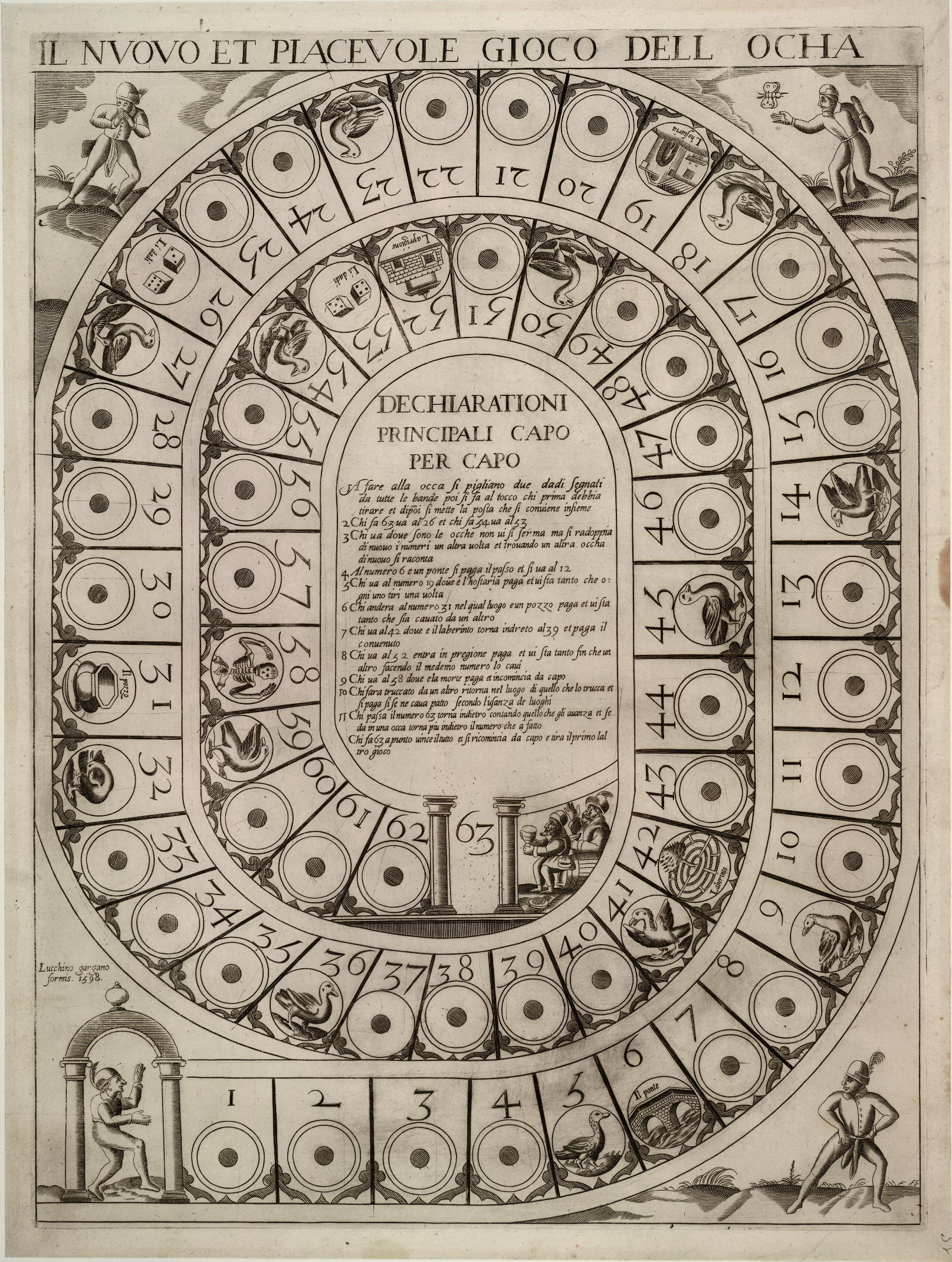 |
| 1598 | L’inventaire après-décès de l’imprimeur et éditeur d’estampes parisien Jean de Gourmont, daté du 21 juillet 1598, révèle que celui-ci possède parmi ses planches gravées le Jeu de l’Oie, qui se vend alors une livre tournois |  |
| 1612 | “Journal de Jean Heroard sur l'enfance et la jeunesse de Louis XIII (1601-1628)”. by Heroard, Jean, 1551-1628 extrait des manuscrits originaux, Paris Librairie de Firmin Didot Frères, Fils &Cie, 1868, t. II, pag 162. (Collegamento BNF). Bibliography | 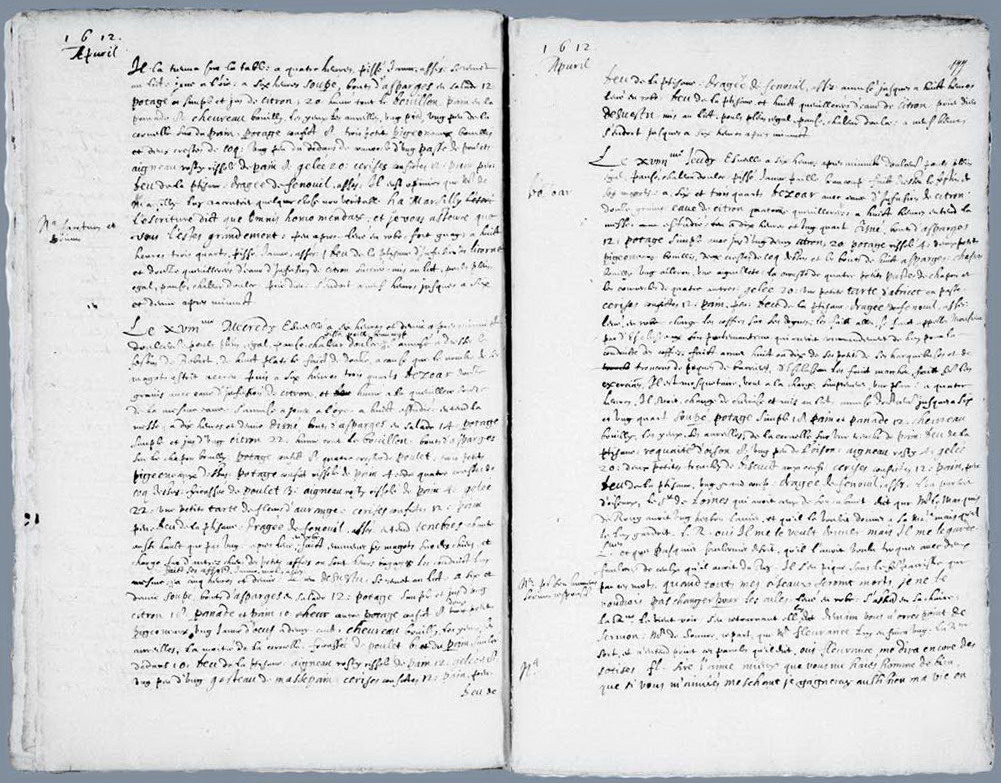 |
| 1614 | Andrea e Michel'Angelo Vaccari Il primo catalogo italiano che cita fogli di giochi ("Scacchiero con la sua Dichiarazione", il "Gioco del Pela Chiù", il "Gioco dell'Oca", il "Gioco del Gambaro") è quello di Andrea e Michel'Angelo Vaccari stampatori romani che lo pubblicarono nel 1614 (il catalogo è contenuto nella pubblicazione del Cardinale Francesco Ehrle del 1908). Bibliography 1) EHRLE, Francesco: "Roma prima di Sisto V. La pianta di Roma Du Pérac-Lafréry…", Roma 1908. Nel libro: "Indice e nota particolare di tutte le stampe di rame, che si ritrovano al presente nella Stamparia di Andrea e Michel'Angelo Vaccari... (1614)". 2) MILANO, Alberto - CRIPPA, Giuliano: "GIOCHI DA SALOTTO. GIOCHI DA OSTERIA nella vita milanese dal Cinquecento all'Ottocento". Catalogo Mostra Palazzo Morando, Via S. Andrea 6 Milano. (Con la collaborazione di Giuliano Crippa). Edizioni Gabriele Mazzotta, 2012. |  |
| 1616/37 | Angelo Salvadori editore veneziano all'inizio del XVII secolo ripropone in pratica tutto l'assortimento degli editori romani: il "Gioco del Pela il Chiù", il "Gioco dell'Ocha", il "Gioco del Gambaro", il "Gioco di carica l'Asino", il "Gioco del Barone" e quello del "Giardin d'Amore". Questi giochi sono conservati presso il "MAK Wien, Museum". Bibliography 1) MAK Wien, Museum 2) MILANO, Alberto - CRIPPA, Giuliano: "GIOCHI DA SALOTTO. GIOCHI DA OSTERIA nella vita milanese dal Cinquecento all'Ottocento". Catalogo Mostra Palazzo Morando, Via S. Andrea 6 Milano. (Con la collaborazione di Giuliano Crippa). Edizioni Gabriele Mazzotta, 2012. | 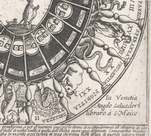 |
| 1617 | "Il Gioco degli Scacchi" "Pietro Carrera, writing in 1617, gives a unique account of the origins of the game: "It is clear that intelligent men, after the first invention of something, will by adding to or modifying the basic idea, make other inventions. We know that this occurred for the Game of the Goose in the time of our fathers: this game was invented in Florence and, since it was much appreciated, Francesco de Medici, Grand-Duke of Tuscany, decided to send it to His Majesty Philip II of Spain. When it was published there, it gave occasion to certain intelligent spirits to invent other games, a little different from the original, among which was the game known under the name of the Filosofia cortesana invented by Alonso de Barros of Spain." The credibility of this is much enhanced by the fact that de Barros’ game does exist, as does its rule book, a 63-space spiral game obviously derived from Goose but having as its theme the progress of a courtier in his career. The game sheet is dated 1588 and was published in Naples, with its engraved wording in Italian. Though Carrera does not give the date of invention of the Goose game itself, it has often been assumed that he is referring literally to the immediately previous generation, implying a late sixteenth-century date; this interpretation is negated by the evidence cited above of the game being known in the fifteenth century." (Adrian Seville) Bibliography 1) CARRERA, Pietro: "Il Gioco degli Scacchi", Militello, 1617. (Carrera). 2) SEVILLE, Adrian: "The Royal Game of the Goose four hundred years of printed Board Games". Catalogue of an Exhibition at the Grolier Club, February 24 - May 14, 2016. 3) LEESBERG, Marjolein: "El Juego Real de Cupido: a Spanish board game published in Antwerp, c. 1620." In: "Delineavit et Sculpsit" n°39, 2015. (Leesberg). 4) GIAMMINUTI, Patrizia:"Il Gioco dell’Oca: una proposta iconografica." In "Ludica. Annali di storia e civiltà del gioco", 23, 2017 (Giamminuti). |  |
| 1630/47 | "Nuovo Gioco dell’Honore. "Al Molto Illustre Sig.re et Patron Osservan.o: il Sig.re Bartolomeo di Gieronimo Baldi. Di V. S. Ills. Divotiss. Servitore Antonio Maria Magnani.". : Dal Buono Floriano, 1630/47. Acquaforte - Taille-douce - Engraving. 385mm x 560mm. “Biblioteca Universitaria di Bologna .(Arch. n°2291) (Gioco di percorso) Bibliography 1) GIAMMINUTI, Patrizia: "Il Gioco dell’Oca: una proposta iconografica." In "Ludica. Annali di storia e civiltà del gioco", 23, 2017 (Giamminuti). | 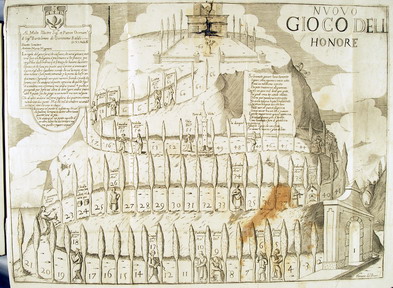 |
| 1640ca | Coriolani: "Il Dilettevole Gioco di Loca". In Venecia appresso Carlo Coriolani, 1640ca, Xilografia policroma, 525mm x390mm (360mm x270mm). Collezione Civica Raccolta delle Stampe A. Bertarelli, Milano. (Arch. n°243) Bibliography 1) ALLEMAGNE, Henry-René D’: "Le noble jeu de l’oie en France, de 1640 à 1950", Ed. Grund, Parigi 1950. 2) SEVILLE, Adrian:"Tradition and Variation in the Game of Goose". In: "Board Games in Academia III", Firenze, Aprile 1999 (aggiornamento del 2005). (Seville). 3) SEVILLE, Adrian:"The Royal Game of the Goose four hundred years of printed Board Games". Catalogue of an Exhibition at the Grolier Club, February 24 - May 14, 2016. 4) GIAMMINUTI, Patrizia: "Il Gioco dell’Oca: una proposta iconografica." In "Ludica. Annali di storia e civiltà del gioco", 23, 2017 (Giamminuti). | 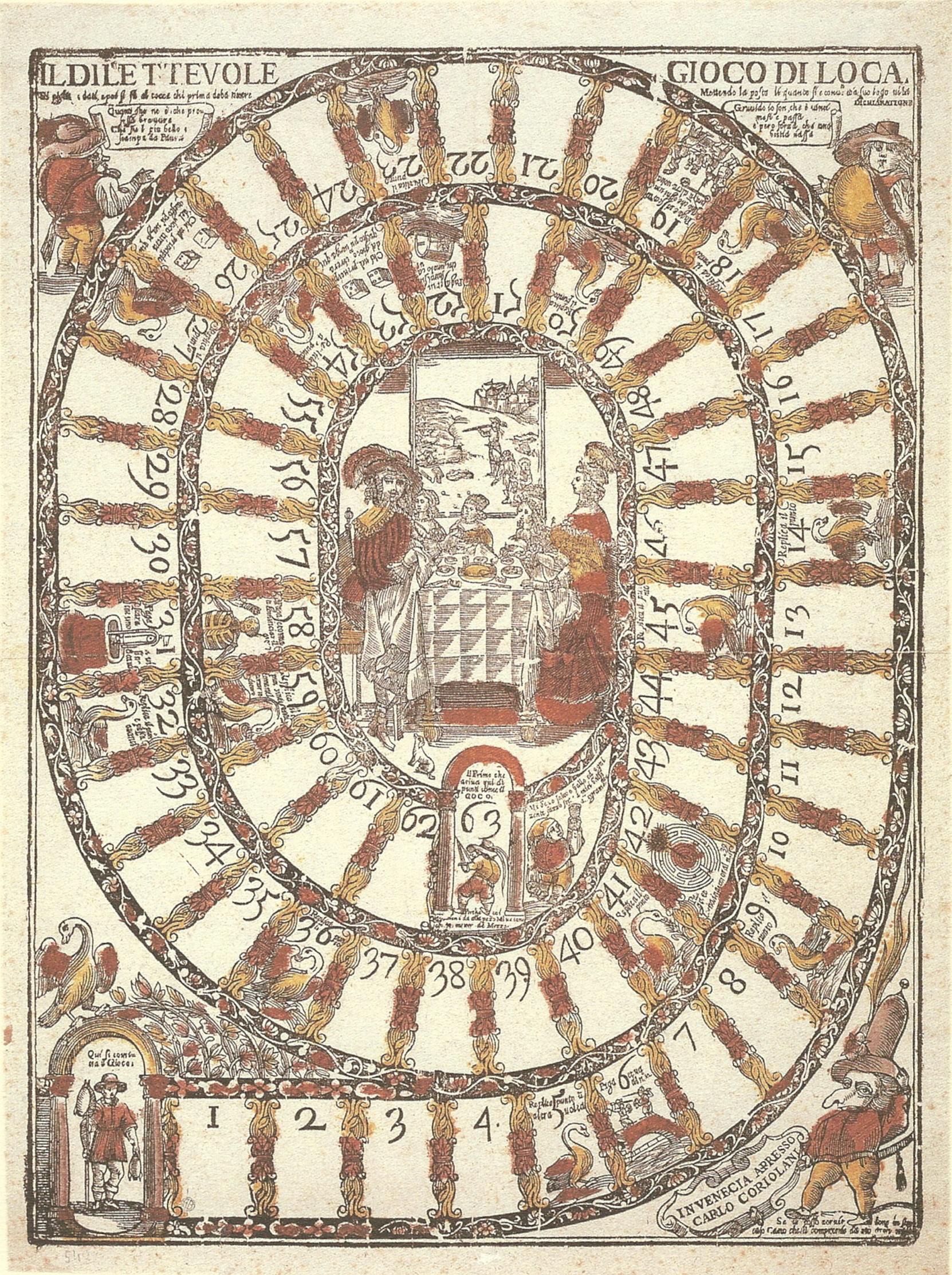 |
| 1640/4 | "La Sfinge-Enigmi" di Antonio Malatesti (II, no. 86), con aggiunta La Tina". CARABBA Editore, Lanciano. Parte seconda, pag. 101 (115), enigma n°86. Risposta pag. 155 (169).
(Malatesti). Bibliography |  |
| 1643 | "Jeu Chronologique pour apprendre la suite des Siècles et ce qui est arrivé de plus remarquable en chascun". Si tratta del più antico gioco francese datato (1638) che si conosca. (Arch. n°2439). Bibliography 1) ANONIMO: "Encyclopédie Méthodique- Dictionnaire des Jeux- Faisant suite au Tome III des Mathématiques", Chez Panckoucke, Hotel de Thou, Rue des Poitevins, Parigi MDCCXCII, 1792. 2) ALLEMAGNE, Henry-René D’: "Le noble jeu de l’oie en France, de 1640 à 1950", Ed. Grund, Parigi 1950, pag. 44. | 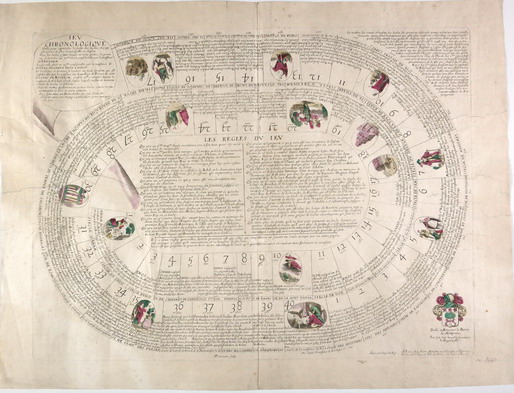 |
| 1644 | Senza titolo – Untitled. Anonimo, 1644. Stampa su legno (bois gravé) (woodcut), 500mm x 340mm. Collezione A. Toffanin. (Arch. n°2781) Bibliography | 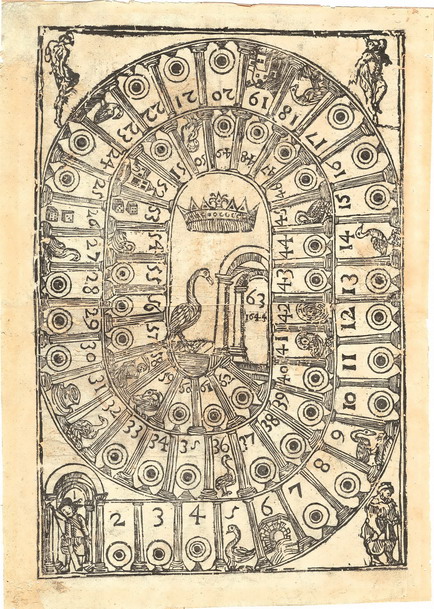 |
| 1650 | Jegher, Jan Christoffel (1618-1666) "...The earliest Game of the Goose that we know of from the Southern Netherlands seems to be a woodcut made and published in Antwerp by Jan Christoffel Jegher (1618-1666), about 1650, although it has only survived in a reprint of c. 1713-’17. Except for the title and landscape format it has little in common with Visscher’s engraving; the lay-out is based on the classic Italian board. A woodcut copy in reverse was published by Philippus Jacobus Brepols as late as c. 1834-’36. Whereas Visscher’s board, judging by its refinement and central scene, aimed at a market of upper class merchants and aristocrats, the central scene in Jeghers’s woodcut refers to an inn or even a brothel, with two men playing backgammon while being distracted by women and robbed from their purses. Jeghers made a second, somewhat cruder woodcut of the game in standing format, which apparenty aimed at an even larger market. The woodblock ended up in Amsterdam, where it was still being reprinted in the mid-eighteenth century and later even copied, about 1770. Both Claes Jansz. Visscher and Jan Jeghers published another board game that had originated in Italy and became popular in the Netherlands, the Game of the Owl or ‘plucking the owl’ [Pela il Chiù]. This game does not have a spiralling track with sixty-three spaces but four oval or circular tracks, two with images of three dice, two with allegorical images. (Leesberg Marjolein) Bibliography 1) LEESBERG, Marjolein: "El Juego Real de Cupido: a Spanish board game published in Antwerp, c. 1620." In: "Delineavit et Sculpsit" n°39, 2015. (Leesberg). | 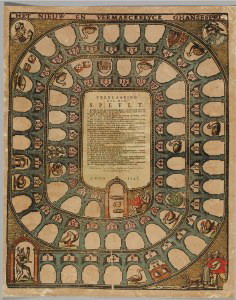 |
| 1654 | SOREL, Charles (attribuito a DE LA MAR(T)INIERE): "La Maison academique contenant un recueil general de tous les ieux divertissans pour se réjouyr agreablement dans les bonnes compagnies". Robert De Nain et Marin Leché, 1654, Paris (1a ed. ispirata da "La Maison de Jeux" pubblicata nel 1642 da C. Sorel). Nel 1659 2a ed. a cura di Étienne Loyson e nel 1665 e 1668, sempre dello stesso editore, altre due edizioni con titolo: "La Maison des jeux academiques". Bibliography 1) SEVILLE, Adrian: "The Royal Game of the Goose four hundred years of printed Board Games". Catalogue of an Exhibition at the Grolier Club, February 24 - May 14, 2016. | 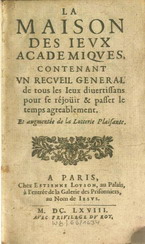 |
| 1668 | Molière, pseudonimo di Jean-Baptiste Poquelin (Parigi, 15 gennaio 1622 – Parigi, 17 febbraio 1673), commediografo e attore teatrale francese. "L'avaro" (L'Avare ou l'École du Mensonge) è una sua commedia in cinque atti. È ambientata a Parigi nella casa di Arpagone, nell'arco di un giorno. La pièce venne rappresentata per la prima volta a Parigi, al Teatro di Palais-Royal il 9 settembre 1668 dalla “Troupe de Monsieur, frère unique du Roi”. Il personaggio del vecchio avaro, che fa da protagonista, è uno dei caratteri tipici del teatro classico, che si ritrova anche nell'Aulularia di Tito Maccio Plauto, commediografo latino. Come nella commedia plautina il timore di essere derubato e in seguito, la consapevolezza del furto subìto offrono lo spunto a un'infinità di situazioni comiche. L'AVARE ACTEURS: HARPAGON, père de Cléante et d'Élise, et amoureux de Mariane. CLÉANTE, fils d'Harpagon, amant de Mariane. ÉLISE, fille d'Harpagon, amante de Valère. VALÈRE, fils d'Anselme, et amant d'Élise. MARIANE, amante de Cléante, et aimée d'Harpagon. ANSELME, père de Valère, et de Mariane. FROSINE, femme d'intrigue. MAITRE SIMON, courtier. MAITRE JACQUES, cuisinier et cocher d'Harpagon. LA FLÈCHE, valet de Cléante. DAME CLAUDE, servante d'Harpagon. BRINDAVOINE, LA MERLUCHE, laquais d'Harpagon. LE COMMISSAIRE, ET SON CLERC. La scène est à Paris. ACTE II, SCÈNE PREMIÈRE "LA FLÈCHE.— Doucement. Plus, un luth de Bologne, garni de toutes ses cordes, ou peu s'en faut. Plus, un trou-madame, et un damier, avec un jeu de l'oie renouvelé des Grecs, fort propres à passer le temps lorsque l'on n'a que faire. Plus, une peau d'un lézard, de trois pieds et demi, remplie de foin; curiosité agréable, pour pendre au plancher d'une chambre. Le tout, ci-dessus mentionné, valant loyalement plus de quatre mille cinq cents livres, et rabaissé à la valeur de mille écus, par la discrétion du prêteur." Bibliography 1) ALLEMAGNE, Henry-René D’: "Le noble jeu de l’oie en France, de 1640 à 1950", Ed. Grund, Parigi 1950. | 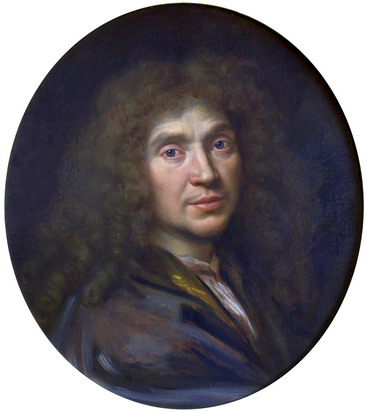 |
| 1672 | Madame de Sévigné (Paris 1626-Grignan 1696) "9 mars 1672: Madame de Sévigné écrit à l'éxilée Madame De Grignan: “Il y avait longtemps que vous étiez abimée, j'en étais toute triste, mais le jeu de l'oie vous a renouvelé comme il l'a été par les Grecs. Je voudrais bien que vous n'eussiez joué qu'a l'oie et que vous n'eussiez point perdu tant d'argent." (Biography) Cousine de Bussy-Rabutin (lui même auteur de Lettres et de Mémoires), elle est introduite aux alentours de 1635 dans le plus prestigieux des Salons, l'Hôtel de Rambouillet par son ami et professeur Gilles Ménage,c'est dans ce Salon qu'elle fait connaissance de ses plus grandes amies, notamment Madame de la Fayette, passionnée comme elle par la littérature. C'est en 1671 que se produisit l'événement qui devait, d'une certaine façon, décider de la carrière littéraire de Mme de Sévigné: sa fille Françoise-Marguerite, qu'elle chérissait par-dessus tout, s'était mariée deux ans plus tôt avec le comte de Grignan; cette année-là, elle partit rejoindre son époux en Provence. La séparation fut pour la marquise un véritable déchirement, mais lui donna l'occasion de rédiger cette célèbre correspondance, ininterrompue de 1671 à 1696, qui forme la quasi-totalité de ses écrits. Les quelque 764 lettres adressées à Mme de Grignan qui nous sont parvenues souvent remaniées et édulcorées par des éditeurs trop zélés représentent un témoignage savoureux et varié, une observation alerte de son époque. Véritable chroniqueuse, Mme de Sévigné relate pour sa fille tous les événements marquants qui se sont produits à Paris: le mariage de la Grande Mademoiselle, l'arrestation de Fouquet, l'exécution de la Brinvilliers lors de l'affaire des Poisons, la mort d'Henriette d'Angleterre, etc. Elle lui adresse aussi des conseils pratiques et mondains, ainsi que des réflexions plus générales sur le temps, l'absence, la destinée humaine. Mais là n'est pas la finalité première des lettres, qui se proposent avant tout de réduire la distance avec l'être aimé par l'évocation des souvenirs communs et par l'expression spontanée du sentiment d'amour maternel. Le style de ces lettres, enfin, adopte le ton enjoué de la conversation mondaine: naturel autant qu'on pouvait l'être dans la fréquentation des salons, il ne doit que très peu aux ressources de la rhétorique, discipline que la marquise, en tant que femme, n'avait jamais apprise. Par leur inventivité, leur liberté de ton et leur originalité, les Lettres de la marquise de Sévigné (outre sa fille, elle correspondit également avec son cousin Bussy-Rabutin, son fils Charles, le Cardinal de Retz, La Rochefoucauld, Madame de La Fayette, etc.) constituent, sans que ce fût le moins du monde prémédité, l'une des oeuvres les plus marquantes du XVIIème siècle français et une source de documents précieux sur la vie aristocratique au XVIIème siècle ." Bibliography 1) ALLEMAGNE, Henry-René D’: "Le noble jeu de l’oie en France, de 1640 à 1950", Ed. Grund, Parigi 1950. | 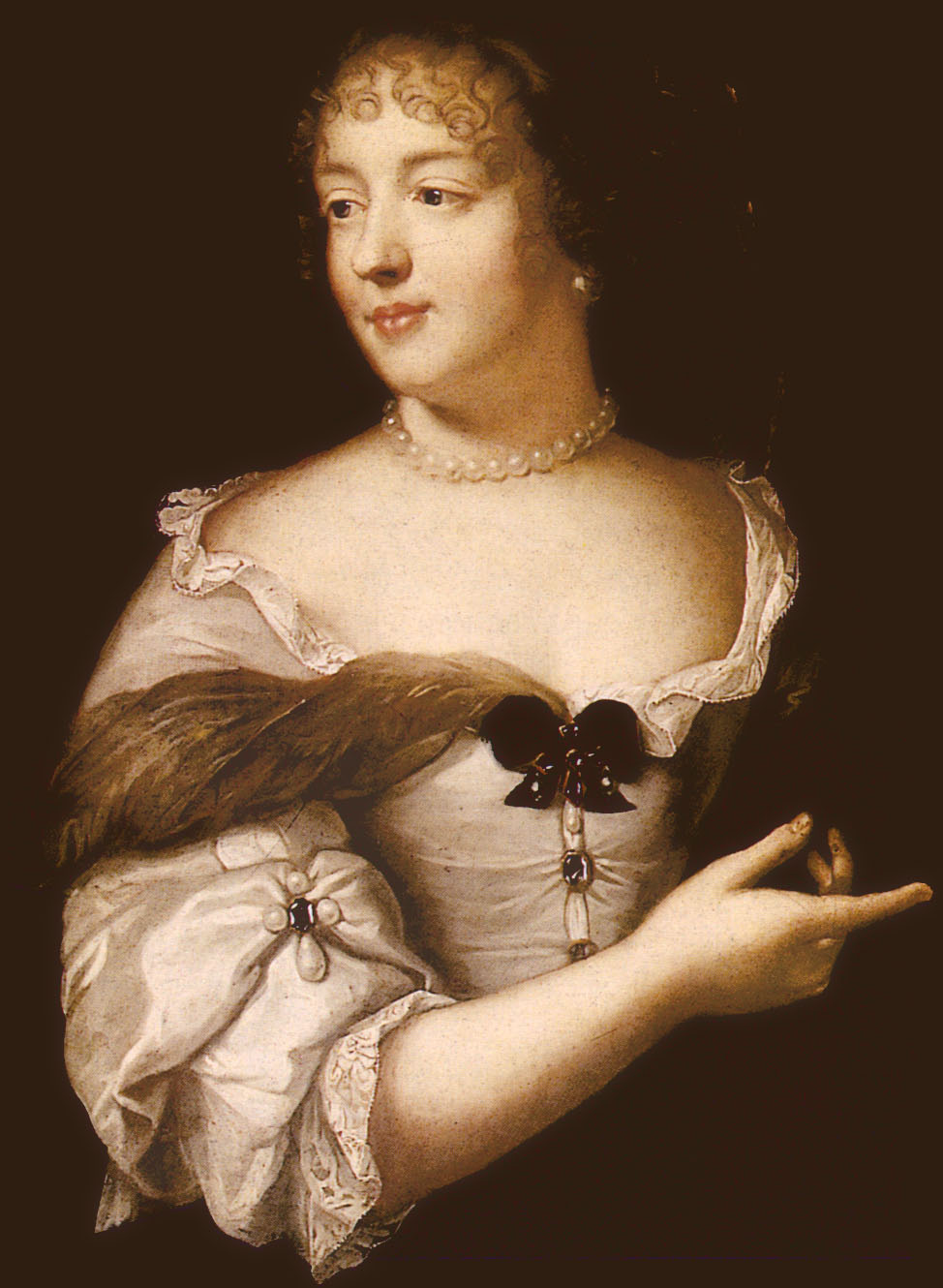 |
| 1690 | "The Royall & Most Pleasant Game of Y Goose". London: Invented at the Consistory in Rome and printed and sould by John Overton over at St. Sepulchre’s Church, in London. [1690]. Copper engraving, 51 × 36.5 cm. (Arch. n°2366) No known copies exist of the game registered by John Wolfe in 1597, but it would not have been too dissimilar from this: "The Royall & Most Pleasant Game of Y Goose" (1690), invented at the Consistory in Rome and are printed and sold by John Overton over against St. Sepulchre’s Church in London. Bibliography 1) WHITEHAUSE, F.R.B.: "Table Games of Georgian and Victorian Days", London, Peter Garnett, 1951. 2) GOODFELLOW, Caroline: "A Collector's Guide to Games and Puzzles" Secaucus, New Jersey, Chartwell Books-London, Quintet Publishing Limited 1991. 3) GOODFELLOW, Caroline: "The Development of the English Board Game, 1770-1850", in Board Games Studies 1, 1998. 4) GOODFELLOW, Caroline: "Jeux de société. Le guide du collectionneur des jeux de société depuis le XVIIIe siècle jusqu’à nos jours", (Edizione francese) Carrousel MS, 2001. 5) SEVILLE, Adrian: "The Game of Goose: and its influence on cartographical race games" Journal of the International Map Collectors' Society, Winter 2008 N°115 2008. 6) SEVILLE, Adrian: "The geographical Jeux de l'Oie of Europe." In "Belgeo" 2008 3-4 2008. 7) GOODFELLOW, Caroline: "How We Played: Games From Childhood Past", History Press, 2012. 8) SEVILLE, Adrian: "A Statistical Approach to the Study of the Incidental Iconography of Early Goose Games of Traditional Vertical Format". In "Board Games Studies", 2011. 9) SEVILLE, Adrian: "The Royal Game of the Goose four hundred years of printed Board Games". Catalogue of an Exhibition at the Grolier Club, February 23 - May 14, 2016. | 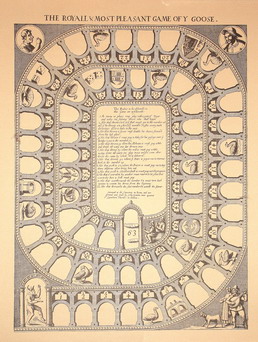 |
| 1696 | Regnard, Jean-François (7 February 1655 - 4 September 1709), "the most distinguished, after Molière, of the comic poets of the seventeenth century", was a dramatist, born in Paris, who is equally famous now for the travel diary he kept of a voyage in 1681. "Dans le "Joueur", une comédie en cinq actes et en vers de Jean-François Regnard représentée, pour la première fois, à Paris, le 19 décembre 1696 on peut lire: Acte Premier, Scène VII HECTOR Tous ces jeux de hazard n’attirent rien de bon. J’aime les jeux galans où l’esprit se déploie. ( à Géronte) C’est, Monsieur, par exemple, un joli jeu que l’oie." Bibliography 1) ALLEMAGNE, Henry-René D’: "Le noble jeu de l’oie en France, de 1640 à 1950", Ed. Grund, Parigi 1950. 2) ZOLLINGER, Manfred: "Zwei unbekannte Regeln des Gaensespiels" In "Board Games Studies" Vol.6, CNWS Leiden. 2003. | 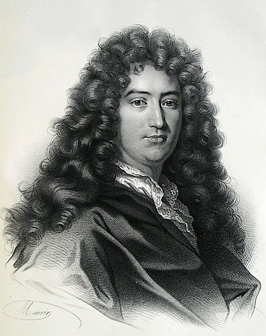 |
| 1698/1771 | Louis De Moni (Breda 1698 - Leiden 1771): "Le Jeu de l'Oie" (dettaglio), 17??. Olio su tela, mm. 438X362. An interior with a kitchen maid cleaning a copper pot and a youth and young woman playing jeu de l'oie signed "L. De Moni f." (lower left) and inscribed 'GANSE.P...' (lower right, on the game board). Oil on panel 17¼ x 14¼ in. (43.8 x 36.2 cm.). Louis de Moni painted a young couple playing this game on at least one other occasion: a painting sold at Christie's, London, 23 March 1990, lot 53 may represent the same youth as in the present picture, as his features are nearly identical and he also wears a brown coat and cap. (Christie's, London) Bibliography 1) ALLEMAGNE, Henry-René D’: "Le noble jeu de l’oie en France, de 1640 à 1950", Ed. Grund, Parigi 1950. |  |
| 1704 | Ménestrier, Claude-François (1704): "Il y a une autre sorte de Jeu , qui semble plus facile pour s’instruire, & qui paroît plus aisé à jouer; c’est le jeu de l’Oye si commun & que l’on pretend être venu des Grecs; quoyqu' il n'en paroisse aucun vestige dans leurs Auteurs. Ce jeu est beaucoup plus aisé, que celui des Cartes, parcequ'il est toûjours tout entier exposé aux yeux des Joueurs; &. qu’étant fait en forme de Limaçon ou de Serpent plié spiralement il est propre à, marquer les choses que l’on veut aprendre par progression comme une suite d' Histoires ou de principes d'un Art. Le Jeu de l'Oye est composé de 63. quarrez dont le premier est la Porte par laquelle on entre, & le 63. une plus grande Porte par la quelle on sort aprés avoir gagné. Les figures des Oyes sont placées de neuf en neuf sur les Nombres qui joints ensemble peuvent representer neuf à commencer cependant par le cinq, nombre dont le double retourne à l'unité; de-là il passe au 14. dont les deux chiffres joints sont cinq 1.& 4. un autre 23. 2 & 3. font cinq. 41., 4. & 1. 50., otez le Zero c’est cinq. Au 59. se joignent le 5. & le 9. Le neuf est aussi toûjours representé par les nombres qu'il produit 2 fois neuf 18., 1.& 8. trois fois 27., 2. & 7. font neuf &c. “... Il semble que l’on ait voulu par le Jeu de l’Oye, faire un Systême du progrés de nôtre vie sujette à beaucoup d’accidens, & dont la 63. année, est l’année Critique&Climaterique, laquelle quand on peut passer, il semble qu’on n’ait plus rien à craindre, & que l’on peut attendre une douce vieillesse jusqu’à la decreptitude.” (Ménestrier 1704: 195). Bibliography 1) MENESTRIER, Claude-François:"Bibliothèque curieuse et instructive de divers Ouvrages Anciens & Modernes de Litterature & des Arts, Vol. II, Trévoux & Paris, 1704, pag. 195-226. 2) ZOLLINGER, Manfred: "Zwei unbekannte Regeln des Gaensespiels" In "Board Games Studies" Vol.6, CNWS Leiden. 2003. (Zollinger). | 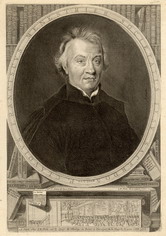 |
| 1743 | Louis De Moni (Breda 1698 - Leiden 1771): "Le Jeu de l'Oie", 1743. Olio su tela, mm. 363X266. Bibliography | 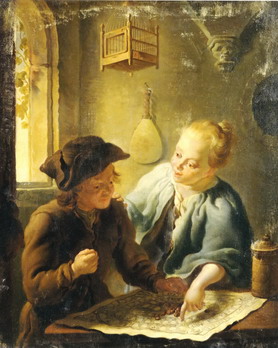 |
| 1744 | "The Game of Goose" in: "The Gentleman's Magazine and Historical Chronicle" by Edward Cave, London. Volume XIV, pag. 668, December. |  |
| 1745 | Chardin J.B. Siméon (1699-1779):"Le Jeu de l'Oye", 1745 "Dans l’art pictural, nous ne connaissons vraiment que le fameux tableau de Chardin: “Le Jeu de l’Oye”, exposé au Salon de 1745, et qui faisait le pendant au “Tour de Cartes” bien connu. Ce tableau fut acheté par le Chevalier Despuechs en 1745, puis fit partie du cabinet de M. Marye de Merval à partir de 1780. Depuis, nous ne savons ce qu’il est devenu, car il ne parait plus guère figurer dans aucun musée ni collection particulière. Mais il nous reste de ce tableau une fine et délicieuse gravure de P. L. Surugue le fils (reproduite au début de ce volume) et soulignée d’un quatrain de Danchet bien dans le gout de l’époque: “Avant que la Carrière à ce jeu soit finie, Que de risques à craindre et d’ecueils à franchir. Enfants, vous ne pouvez trop tot y réfléchir, C’est une image de la vie.” Cependant il reste deux répliques du tableau de Chardin. L’une fut trouvée après la mort du peintre et figure à sa vente après décés; elle est légérement plus grande (hauteur 32, largeur 38 cm) et est dénommée: “Des enfants jouent au Jeu de l’Oye”. Elle fut adjugée 35 livres en 1780, puis 40 livres deux ans plus tard dans une vente publique à Toulouse. L’autre réplique appartient a la collection Strauss à Paris et mesure 33x41 cm (Wildenstein, Georges: Chardin. Paris, 1933 ). Il existe aussi une variante de l’oeuvre de Chardin au musée de Chartres, mais qui comprend cinq personnages. M. Gobillot, l’aimable conservateur de ce musée, nous fait part de ses doutes quant à l’authenticité du tableau qui parait plutot une composition influencée. Nous l’admettons bien volontiers. (D'Allemagne, Henry-René) Bibliography 1) D'ALLEMAGNE, Henry-René: "Le noble jeu de l’oie en France, de 1640 à 1950". Ed. Grund, Parigi, 1950. 2) WILDENSTEIN, Georges: "Chardin". Paris 1933. | 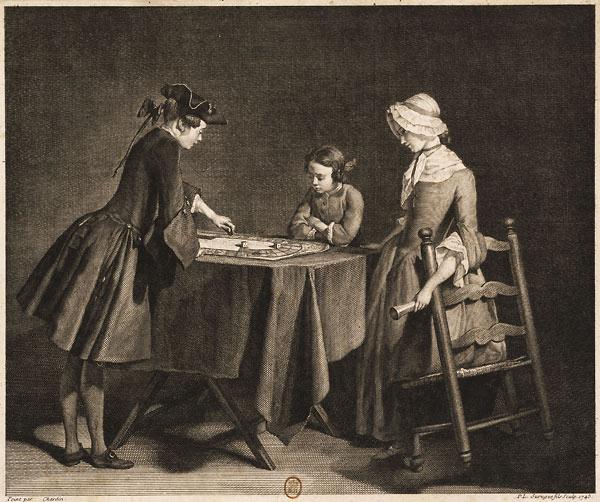 |
| 1767/8 | Dreux du Radier, Jean Francois: "Récréations historiques, critiques, morales et d'érudition; avec l'Histoire des fous en titre d'office.", 1767/68, (pag. 203-204). "...We have taken the passage in the sermon that cites the Ludus Triumphorum from the work "Récréations Historiques, Critiques, Morales et d’Èrudition avec l’Histoire des Fous en Titre d’Office" (Historical, Critical, Moral and Erudite Recreations with the History of Fools with Official Title), written by M. D. D. A (Jean-Francois Dreux Du Radier) and published in Paris in 1767. Talking about the crazy actions performed by all types of people, including even Kings, the author of the above-mentioned work gives us several passages taken from the Sermons of Barlette. Among these, the one for the Fourth Sunday of Advent describes an impious person who instead of hosting God in his heart during Sunday Mass, thought fit to offer to host him at his house in order to have fun together playing cards: “C'est ainsi qu'il [Barlette] fait le portrait d'un impie qui au lieu de nétoyer sa conscience pour recevoir son Sauveur, & loger son Dieu, dit: Si vult venire in domum meam in istis festis paravi plura. Si voluerit ludere ad TRIUMPHOS sunt in domo; ad TESSERAS, habeo plura tabularia. Ad OCCAM, habeo taxillos grossos, & minutos: grossos ut si fortè male videret, QUIA DEUS SENUITt: quelle impertinence! Ou plutôt quelle impiété” (So he [Barlette] paints the portrait of a godless person who instead of cleaning his consciousness to receive his Saviour and host his God, says: "If he wants to come to my house during this holiday season, I have prepared quite a lot of things. If he want to play triumphs, they are at the house; [If he want to play] at board games I have many. For the game of Occam I have big and small dice: big if he sees very poorly". So God fainted: what impertinence! Or rather what wickedness)." (Vitali Andrea) "...The earliest reference to the Game of the Goose appears in an obscure book of sermons for Advent by the Dominican Gabriele da Barletta in 1480. He speaks (disapprovingly) of playing games at Christmas and, moreover, of the need for large and small dice, to overcome the imperfections of vision due to old age. Si vult venire, in domum meam in istis festis paravi plura. Si voluerit ludere ad triumphos, sunt in domo; si a tavole habeo plura tabularia; si a locha habeo taxillos grossos et minutos. [If anyone comes to my house in this season, I have prepared several games. If he wishes to play at tarot, there are tarot cards in the house; if at backgammon [tavole], I have several boards; for goose I have both large and small dice.]. (Adrian Seville) Bibliography 1) SEVILLE, Adrian: "The Royal Game of the Goose four hundred years of printed Board Games". Catalogue of an Exhibition at the Grolier Club, February 24 - May 14, 2016. 2) DREUX du RADIER, Jean -Francois: "Récréations historiques, critiques, morales et d'érudition; avec l'Histoire des fous en titre d'office. Par M.D.D.A., auteur des Anecdotes des Rois, Reines & Régentes de France." Paris, Robustel Libraire. La Veuve Duchesne Libraire, 1767. (A la Haye edizione del 1768).((Dreux du Radier) 3) GIAMMINUTI, Patrizia:"Il Gioco dell’Oca: una proposta iconografica." In "Ludica. Annali di storia e civiltà del gioco", 23, 2017 (Giamminuti). | 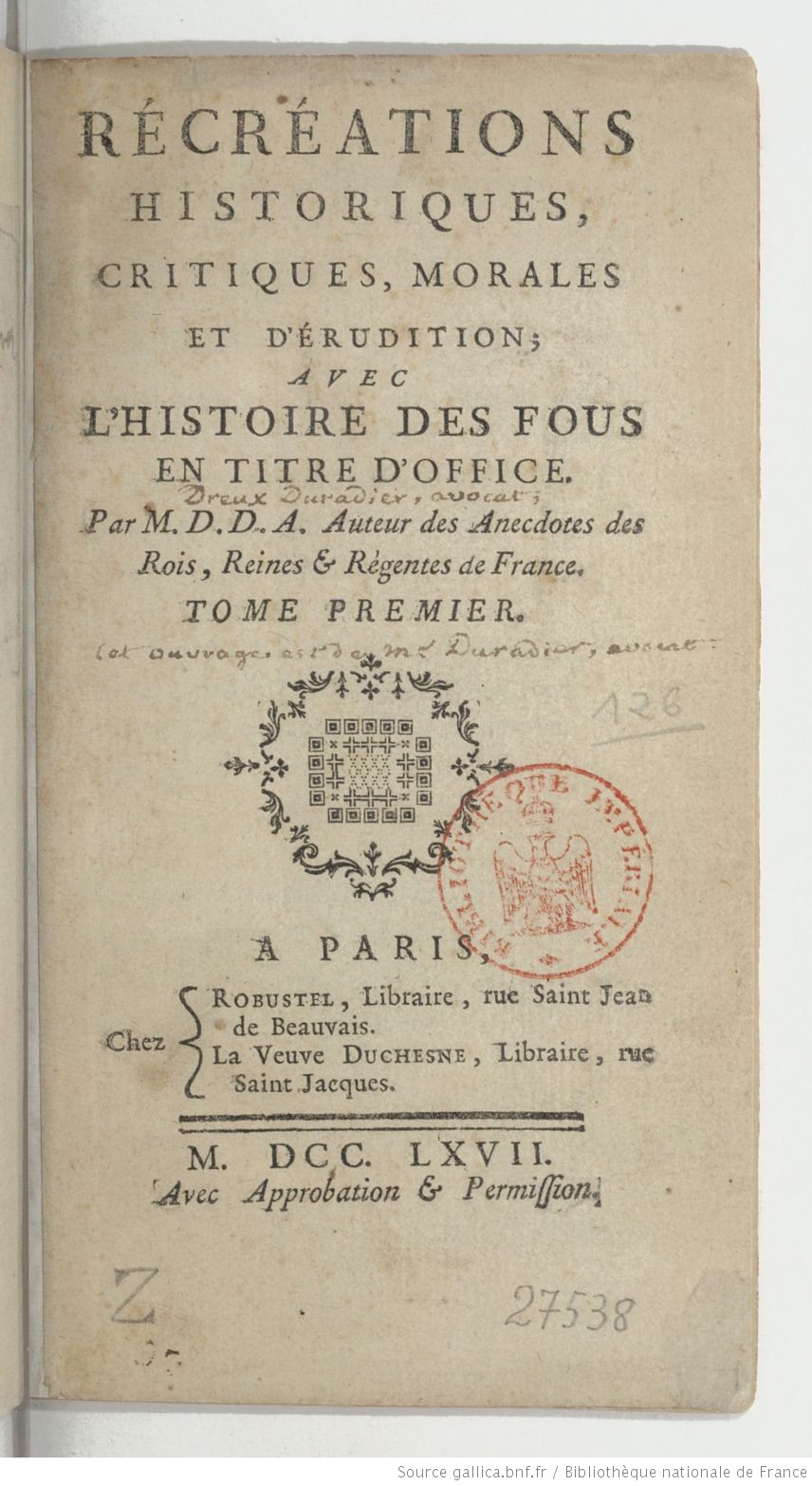 |
| 1982 | Pierre Dietsch uno dei più grandi collezionisti di giochi dell'Oca la sera del 1° Dicembre 1982 in occasione della 509a cena conviviale de "Vieux Papier" presenta una relazione sul tema dal titolo: "Variations sur le thème du Jeu de l'Oie". In tale occasione Dietsch offre ai commensali anche un gioco ideato da lui. Si tratta dell'unica testimonianza lasciata da questo appassionato collezionista che cerca di fornire delle indicazioni in merito alle origini ed al significato simbolico del gioco dell'oca. Grande estimatore dell'Italia ed innamorato di Siena dove trascorreva ogni anno le sue vacanze, Pierre aveva più volte contattato le autorità cittadine proponendo di donare alla città di Siena la sua collezione costituita da oltre 2500 giochi. Non avendo però avuto alcuna risposta dopo la sua morte la collezione venne dispersa e solo una parte si trova attualmente nel Museo du Rambouillet a Parigi. "Mesdames, messieurs , L’oie partage avec quelques autres animaux l’honneur de preter son nom à un jeu. Toutefois, l’origine du Jeu de l’Oie est inconnue. Une première hypothese le ferait remonter a l’Antiquité du fait de la mention “renouvelé des Grecs”, mais cette mention ne figure pas sur les premiers jeux connus; elle apparait sur les bois gravés des imagiers populaires francais du XVIIIème siècle et reflèterait alors l'engouement des contemporains pour les auteurs antiques. Laissons cette hypothèse et cherchons les premières traces du jeu: Rabelais, au retour d’un voyage en Italie publie, en 1534, “La vie horrifique du grand Gargantua”; il énumère deux cents jeux, le jeu de l’oie n’y figure pas. Un ouvrage siennois de 1572 fait un inventaire de plus de cent trente jeux et, de même, le jeu de l’Oie n’est pas mentionné. Par contre, dans un traité sicilien sur les échecs de 1617, on peut lire, à propos du jeu de l’oie: “ce jeu avait été inventé à Florence et comme il plaisait infiniment à François de Médicis, ancien Duc de Toscana, ce dernier l'envoya à Sa Majesté Philippe II d'Espagne”. Le jeu de l’oie aurait donc été conçu à Florence dans les années 1580. Dans cette optique, je voudrais émettre une hypothése et pour cela nous plonger quelques instants dans l’esprit de la Renaissance. A mon sens, le jeu de l’oie est d’abord “renouvelé des dés” car le moteur essentiel du jeu est bien le hasard pur. En 1524, Erasme publie l’”Essai sur le libre arbitre” dans lequel il donne une très grande part au libre arbitre de l’homme. L’année suivante, Luther publie le “Traité du serf arbitre” où, au contraire, il nie tout libre arbitre. Erasme et Luther s’opposent, c’est un debat qui passionne toute la fin du XVIème siécle: La Querelle du libre arbitre. En Allemagne et en Suisse, la Réforme avec Luther puis Calvin insiste sur la toutepuissance divine et l’aliénation volontaire de l’âme du croyant. Une stricte discipline spirituelle est instituée. Transportons-nous maintenant en Italie, à Florence à la même époque: la cité est riche et démocratique, les Princes admirent le talent et le dépassement, les moeurs sont libres. Les humanistes y développent une théorie de la responsabilité. Les grandes familles, les libertins s’opposent à la transformation de la vie religieuse. Ils ont une horreur profonde pour le Protestantisme. Le jeu de l’oie concrétise le principe protestant de soumission de l’homme à la loi divine. Dans ces conditions, si le jeu de l’oie a bien été conçu à Florence, ce ne peut être qu’en opposition à la Réforme. On imagine volontiers quelque libertin spirituel choisissant le principe d’un jeu pour tourner en dérision les bases de la Reforme, et comme l’Inquisition veille, ce jeu reste totalement neutre sur le plan religieux. Mais s’il semble neutre sur un plan purement religieux, le jeu de l’oie est charge de symboles à plusieurs niveaux. La marque du joueur est sa projection, corps et âme, sur un parcours qui symbolise la vie et le déplacement de cette marque est soumis au hasard. Au niveau des nombres, le parcours du jeu de l’oie comporte 63 cases plus 2: le zero et l’infini. Le zero est le lieu où l’on se trouve au debut du jeu et où l’on retourne aprés la mort. L’infini, c’est juste aprés la case 63 dite “Porte du jardin de l'oie”, le jardin lui-même, symbole du paradis, du cosmos dont il est le centre. Le nombre 64 qui correspond au centre du jeu est le carré de 8, expression d’une totalité parfaite réalisée: plénitude, béatitude, infini,.. Entre le zero et l’infini, nous trouvons 7 séquences de 9 cases, puisque de 9 en 9 se trouvent les oies. Or 9 est le dernier de la série des chiffres, il annonce à la fois une fin et un recommencement, c’est-à-dire une transposition sur un autre plan. Et 7 est le nombre des états spirituels hiérarchisés qui permettent le passage de la terre au ciel. Sur le plan de la forme, la spirale évoque l’evolution et son caractère cyclique, elle est rotation créationnelle, elle représente les rythmes de la vie, la pérégrination cyclique des âmes incarnées, desincarnées et réincarnées.Quant l’oie, sa charge symbolique est complexe. En Egypte par exemple, c’est le soleil sorti de l’oeuf primordial, l'âme des Pharaons, la messagère entre le ciel et la terre. En Grèce, elle représente la fatalité car elle est née du viol de Némésis métamorphosée en cygne par Zeus mué en aigle. Bien sur, tous les accidents du jeu ont une signification profonde: - le Pont permet le passage d’une rive à l’autre, d’un état de l’ être à un état plus évolué; - l’Hotellerie, c’est le repos, la pause créatrice qui permet l'élévation à un nouveau niveau; - le Puits, synthèse des trois éléments: eau, terre, air est une voie vitale de communication, il est symbole de connaissance; - le Labyrinthe symbolise un système de défense contre celui qui veut violer l’intimité des relations avec le Divin; - la Prison symbolise le lieu de la mort du “vieil” homme et de la naissance de l’homme “nouveau”; - la Mort enfin, fille de la nuit, soeur du sommeil, possède le pouvoir de régénérer. Dans le jeu elle renvoie au zéro, c’est-à-dire à l’oeuf, donc à une renaissance. Et c’est à travers un cycle de renaissance jusqu’à la perfection acquise que s’ouvrira l’accès, hors de la roue de l'existence, à l’Eternité, centre du jeu. De tous les accidents du jeu de l’oie, la Mort est celui que le joueur a le plus de chances de rencontrer. La probabilité de passer le Pont de la case 6 étant de 1, celle des autres accidents est de l’ordre de 3, et la probabilité de rencontrer la Mort est supérieure a 4. Ceci s’explique par le fait que la case 58 est soumise au phénomène de retour de la marque du joueur à partir de 63. Ce phénomène, très sensible pour le joueur, augmente sa crainte de la Mort. Toute sa charge symbolique donne au jeu de l’oie un caractère universel qui explique son succes et celui de ses innombrables variantes.Après cet exposé du theme, je vais vous présenter quelques variations. [... ]" ((Pierre Dietsch). Bibliography 1) DIETSCH, Pierre: "Variations sur le thème du Jeu de l’Oie". In: "Le Vieux Papier", fascicolo n°290, ottobre 1983, Parigi. | 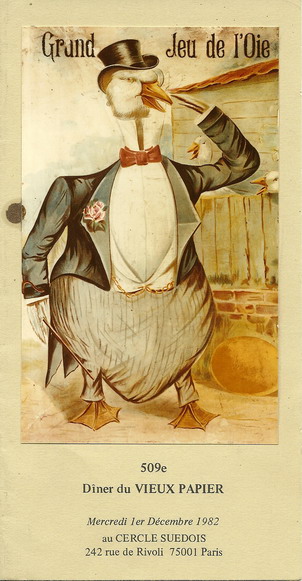 |
| 1995 | Intervista radiofonica a Pierre Dietsch che illustra le sue ipotesi sulle origini del Gioco dell'Oca. | |
| 2008 | Nel Novembre 2008 un anonimo internauta (PK, peacay) mette online le immagini di giochi conservati al British Museum di Londra e facenti parte della Donazione Lady Charlotte Schreiber (Board Games). Si scopre così per la prima volta l'esistenza del gioco (Filosofia Cortesana) descritto da Carrera nel suo libro "Il Gioco degli Scacchi" del 1617, ma soprattutto si scoprono altri giochi datati della fine del XVI° secolo. Il Coriolani (1640ca), non è più, il più antico gioco conosciuto. Bibliography BibliOdyssey. Board Games: Five Centuries of Board Games, Wednesday, November 19, 2008. Posted by peacay. (BibliOdyssey by peacay). |